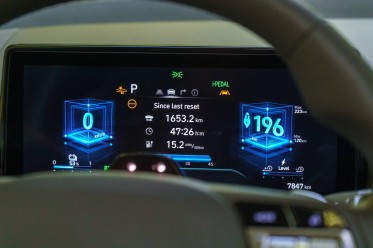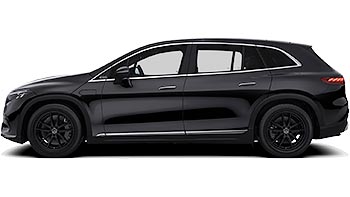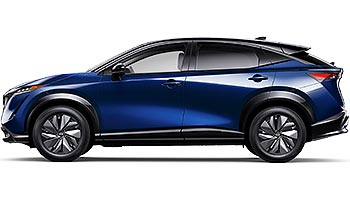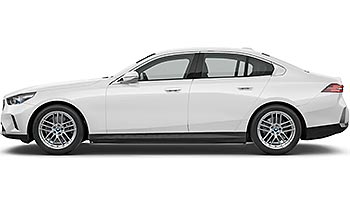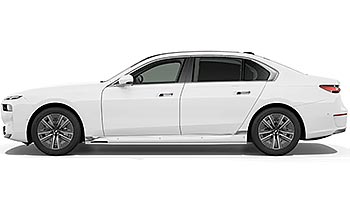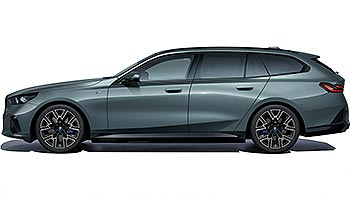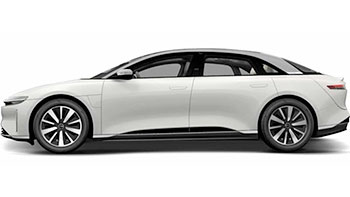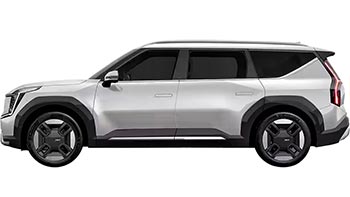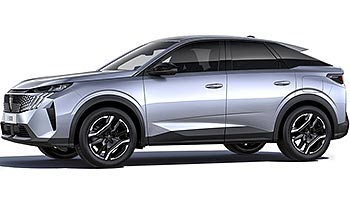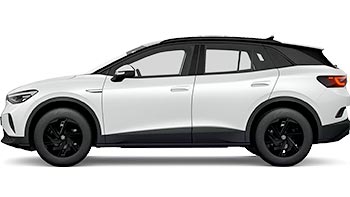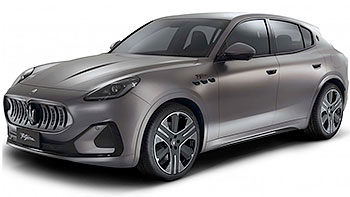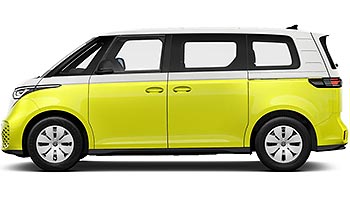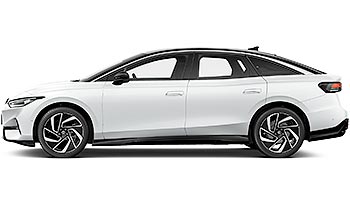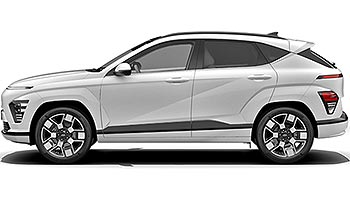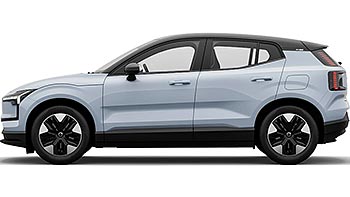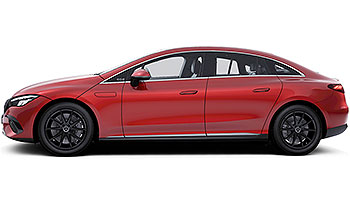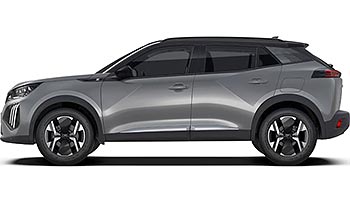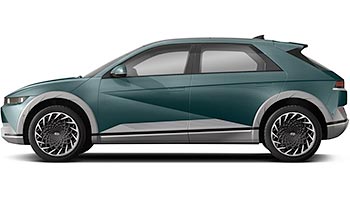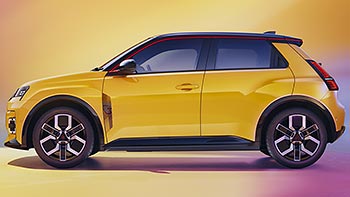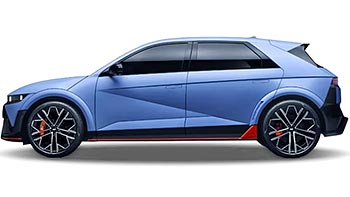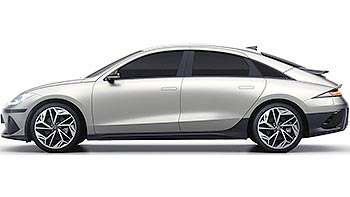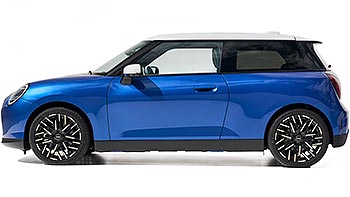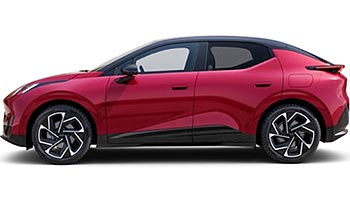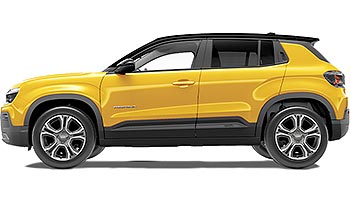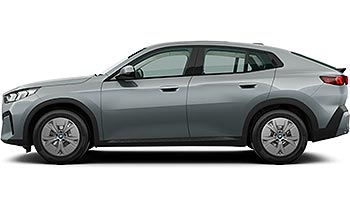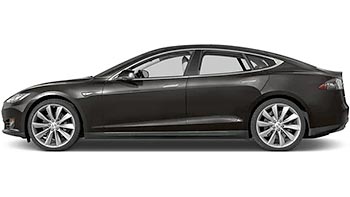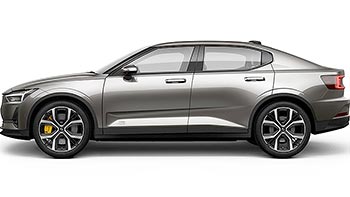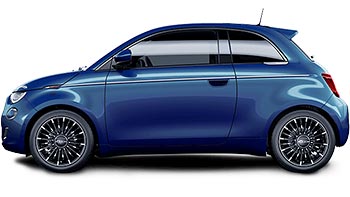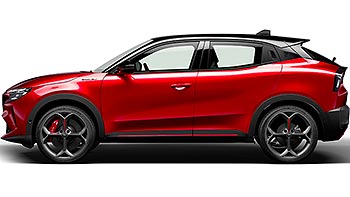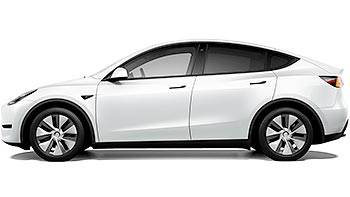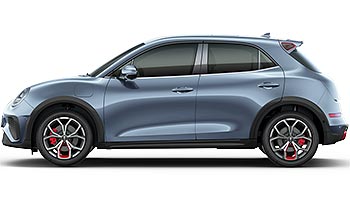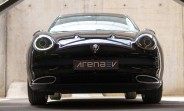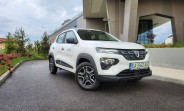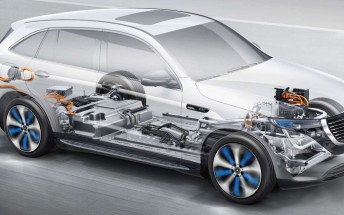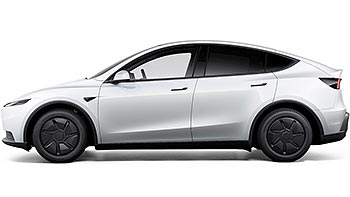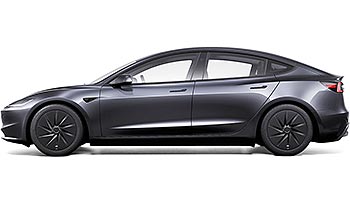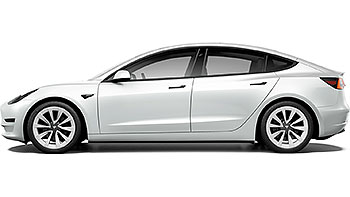2025 Hyundai Inster Long Range review

Hyundai has been expanding its EV lineup rapidly in recent years and with tremendous global success. Urban mobility is a field where the Koreans have historically done very well with their little ICE models roaming around every major city. Logically, Hyundai combined its two strengths and gave us the Inster.
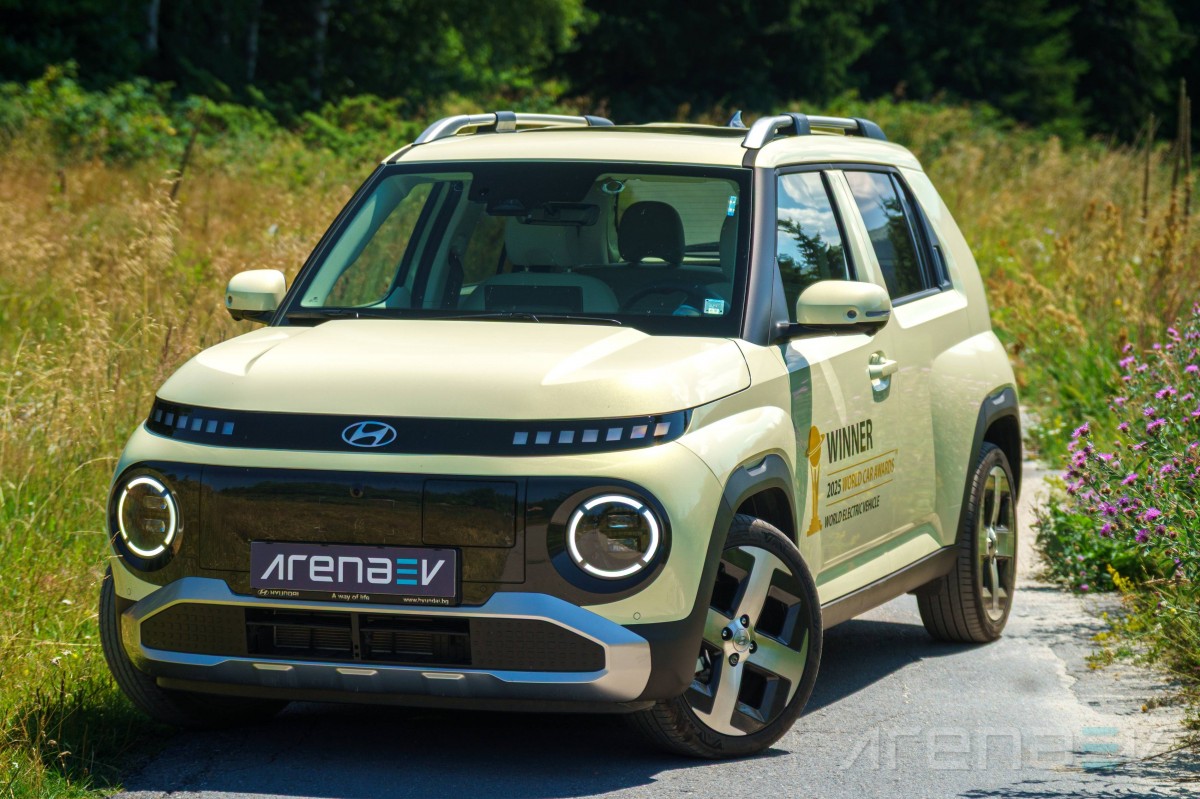
Table of Contents:
- Exterior
- Interior
- Storage & practicalities
- Driving experience
- Ride comfort
- Tech features
- Cabin noise
- Acceleration and braking
- Consumption
- Charging speed
- Competition
- Verdict
There was a time when most EVs were little urban models, but as the market expanded the focus shifted towards speed records and mighty sizes. Yet, now that the tech advancements have enabled it, a number of EV manufacturers are again delivering smaller more affordable models. The Inster is a sub-compact lifted hatchback that should offer a lot at an attractive price (mind that Hyundai calls it an SUV, but that just feels wrong).
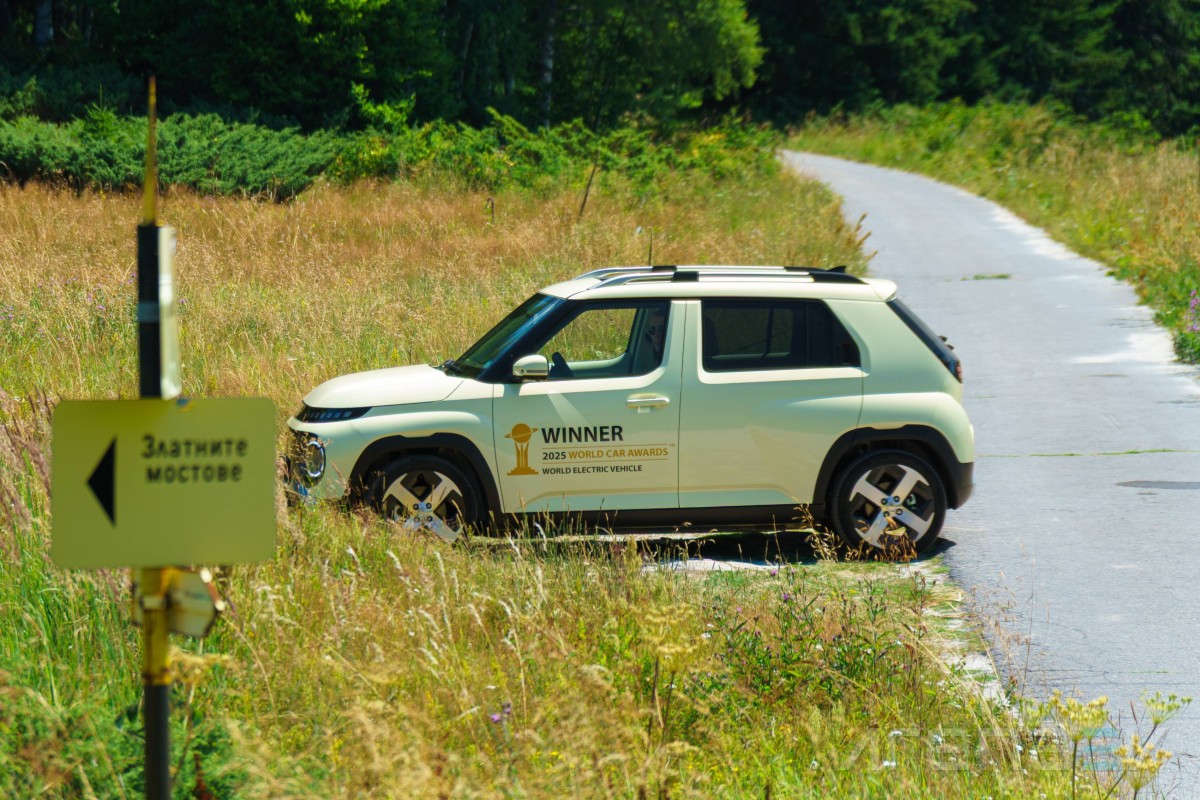
The model we are reviewing today is the Hyundai Inster Long Range in the Premium trim, which is the top spec'd version. It comes with a 49 kWh battery and a motor outputting 115 hp and 108 lb-ft on its front wheels. An AWD version will likely never be offered, as it just doesn't make sense in this class.
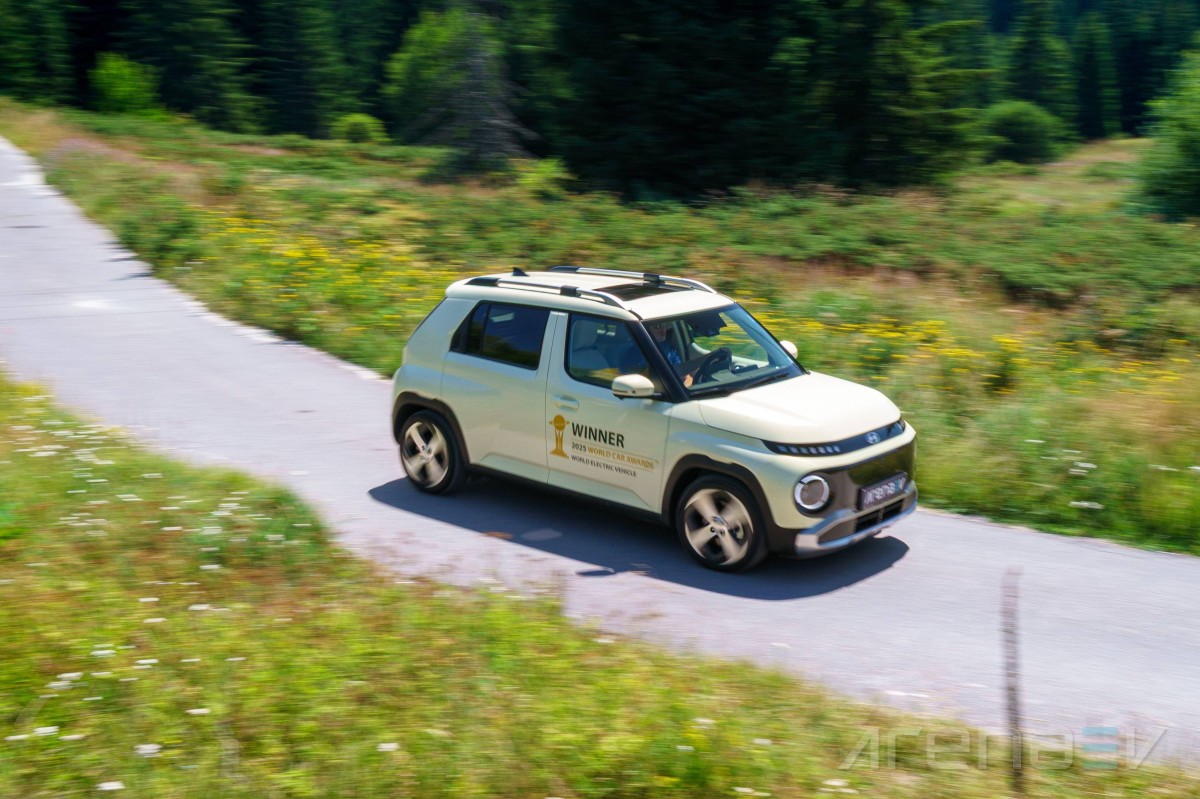
We have tested most of the direct rivals of the Inster, so it will be interesting to see how it stacks up to the competition. The Inster doesn’t rely on nostalgia or sportiness others do. Instead it starts with a blank sheet, which helped it maximize practicality.
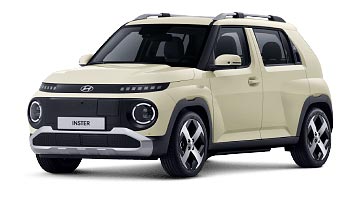
Hyundai Inster Long Range 2024 -
- Dimensions: 150.6 inches x 63.4 inches x 62 inches, 101.6 inches wheelbase.
- Drivetrain tested: Long Range - FWD 85 kW (115 hp), 108 lb-ft, 49 kWh total battery capacity, 46 kWh usable battery capacity
- Other drivetrains: Standard Range - FWD 71 kW (97 hp), 108 lb-ft, 42 kWh total battery capacity, 39 kWh usable battery capacity
- Charging: 120 kW CCS
- Range: 221 miles WLTP
- Weight: 3,109 lb unladen, 3,836 lb gross
- Other features: V2L charging, seats fold to a bed, OTA updates.
Exterior
Hyundai is keen to experiment with the design of each new model. The Inster has minimal resemblance to the rest of the company's lineup, yet it doesn’t look particularly weird or outlandish. It looks like a lifted compact hatchback, despite Hyundai trying to pitch it as an SUV.
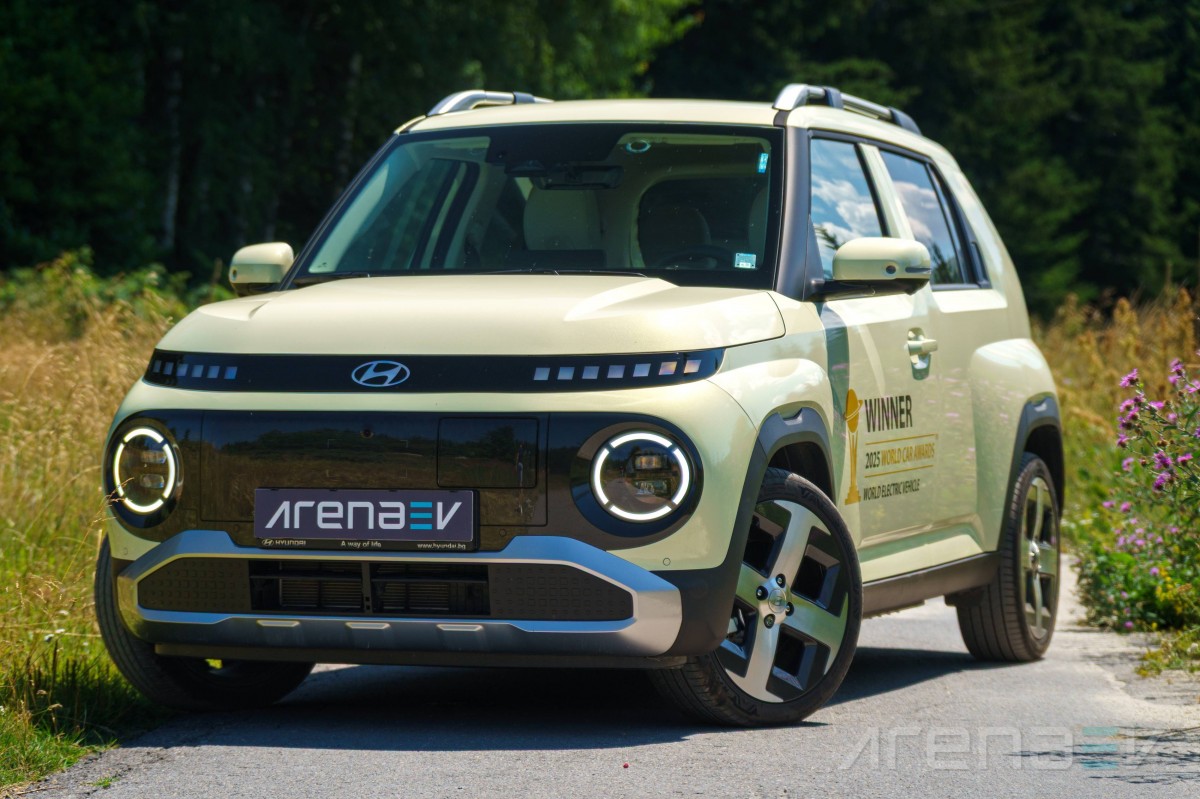
From the front, the Hyundai Inster welcomes with a friendly face with gigantic round running lights. It looks like the car is happy to see you and that makes it very cute in today's traffic of brute and angry-looking vehicles. Inside the running lights is where the headlights are.
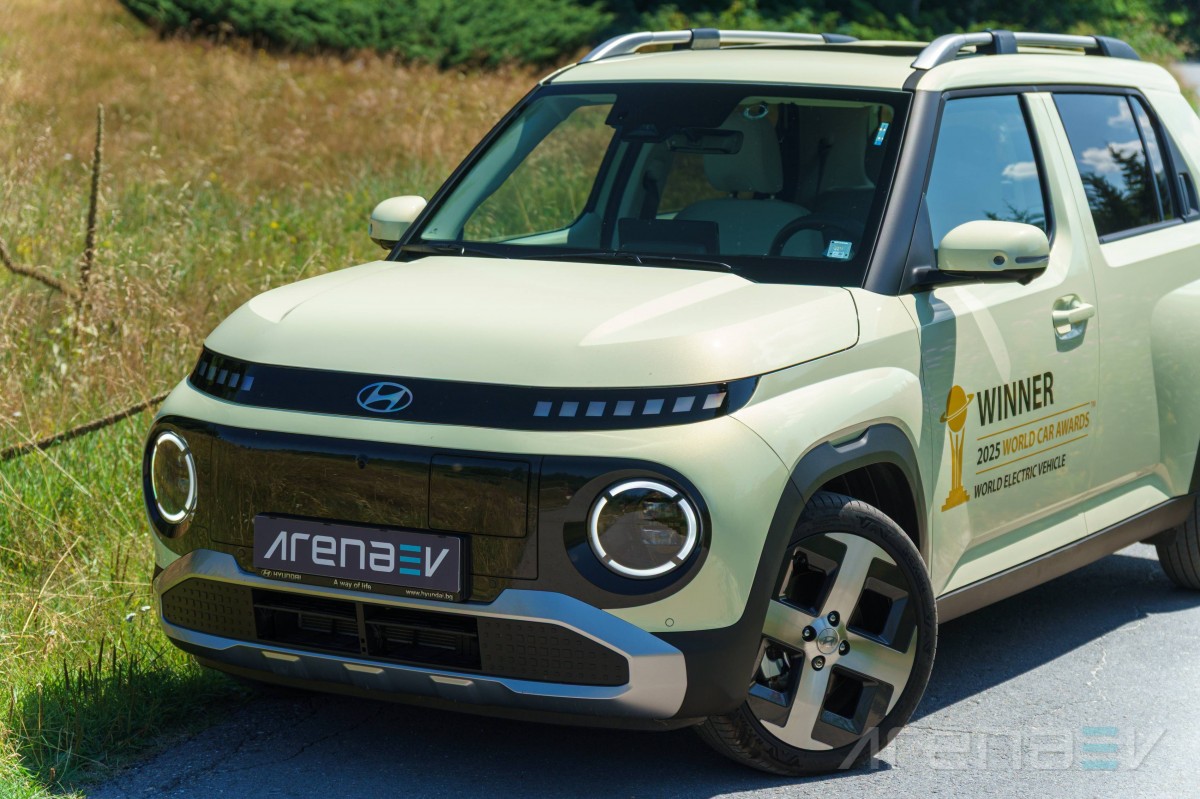
The turn signals have their own dotted LED space where the regular headlights are located on most vehicles, giving the Inster a somewhat eccentric look.
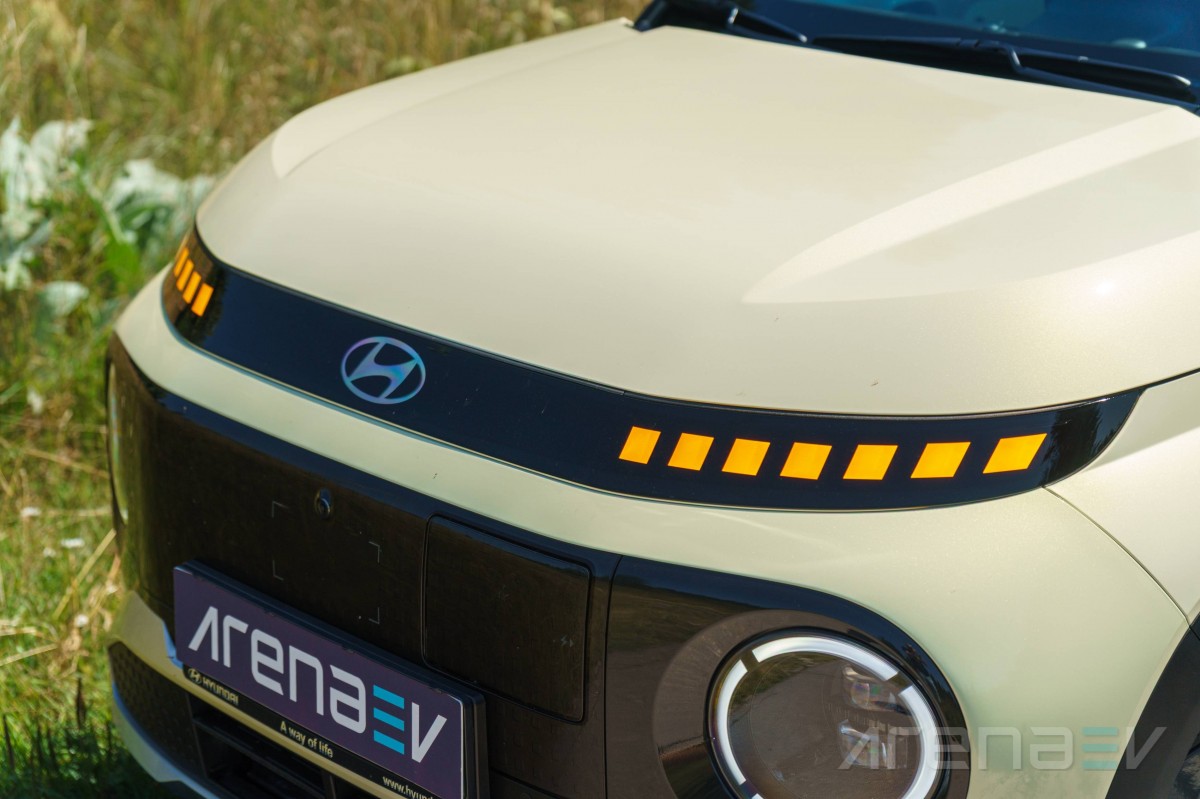
What breaks up the design slightly in the front is the charging port, which sticks from the bumper. This makes it easy to use for most homes and chargers. However, this is the most vulnerable area of a car when it comes to collisions and scratches, which could be problematic in the long term.
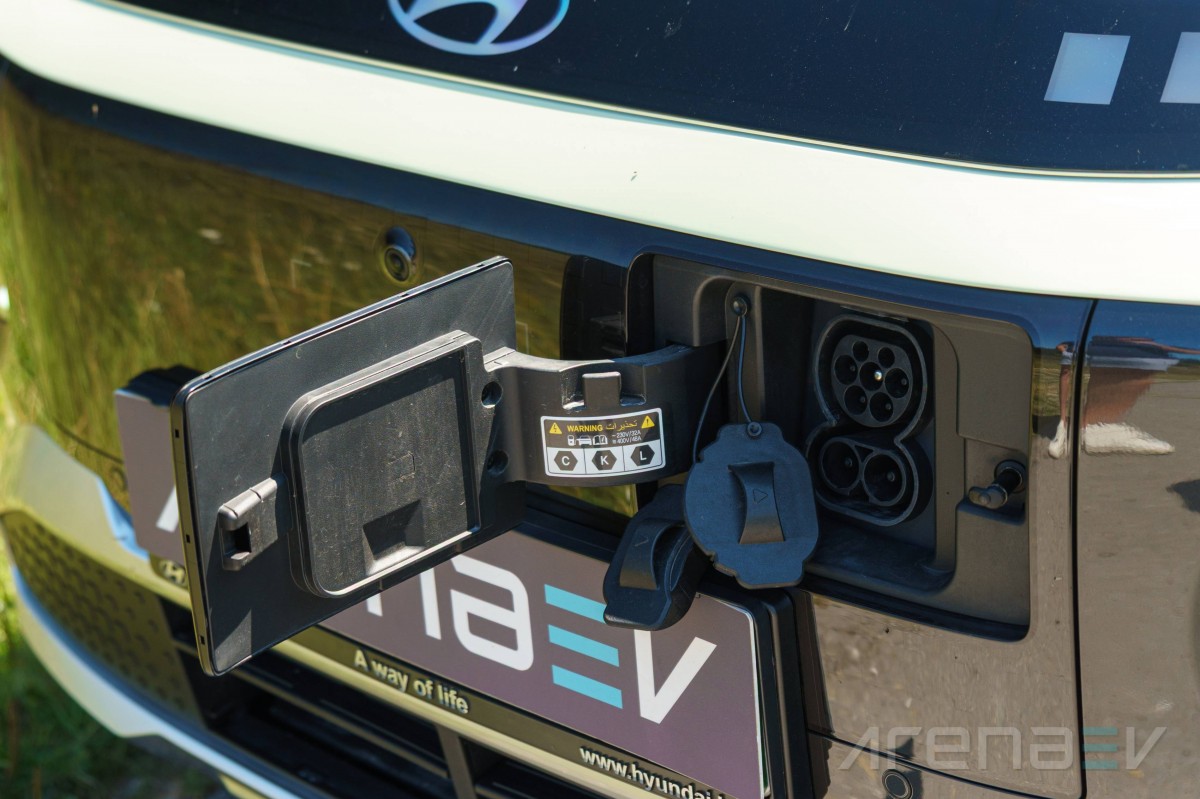
The lowest part of the bumper has an active flap, which activates when the battery needs more cooling. It is not only useful but also very satisfying to watch in action.
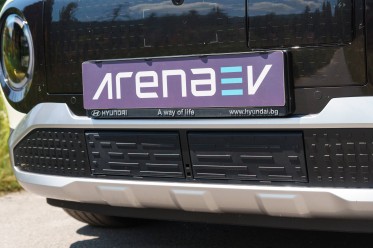
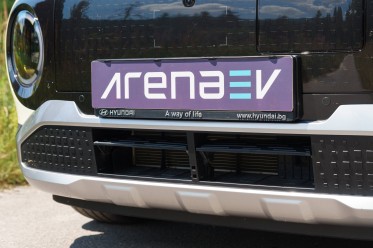
The flap helps with cooling, especially in the summer heat
From the side, the Inster looks very much like the Suzuki Ignis. Both vehicles are very small, with high ground clearance and off-angle C-pillar. It is a cool look for the Korean, and even if not very original in general, it separates the Inster from virtually any EV competitors.
One fabulous practical addition is the roof rack, which comes standard for all models. The "Cross" trim even lets you choose an optional offroad roof rack for mounting heavy-duty gear like a tent but we think that’s a bit of an overkill for such a tiny car.

The flared fenders give the Inster a nice stance and suggest off-road ambitions. They appear cartoonish to some people but that fits with the character of the entire car.
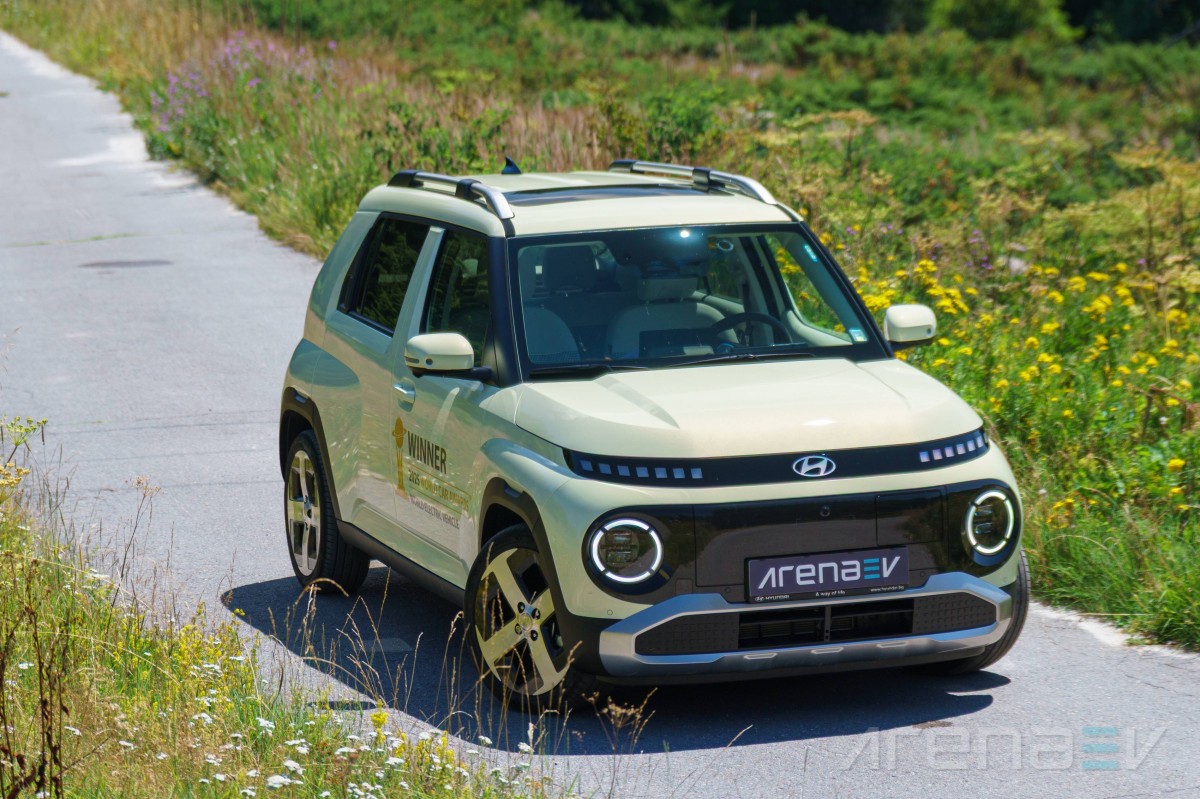
One big benefit of the boxy design are the squared windows, which roll down completely on all sides. This might be a great benefit for drivers and passengers who like to feel the wind while driving.
The windows end with a high-mounted rear door handle, which clears up the design.
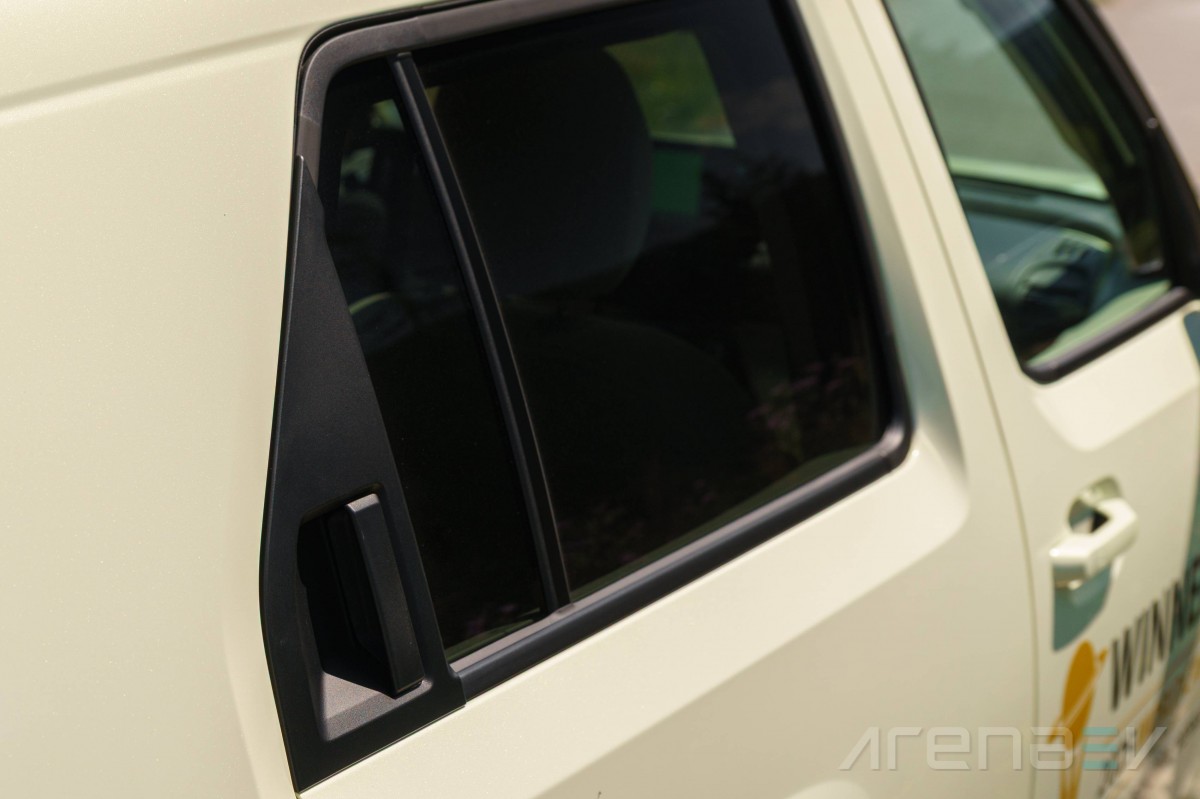
The wheels of the Inster are 17-inch alloys only in the "Premium" trim and 15-inch steelies in the others. The smaller ones enable better range, yet the 17’s look much better.
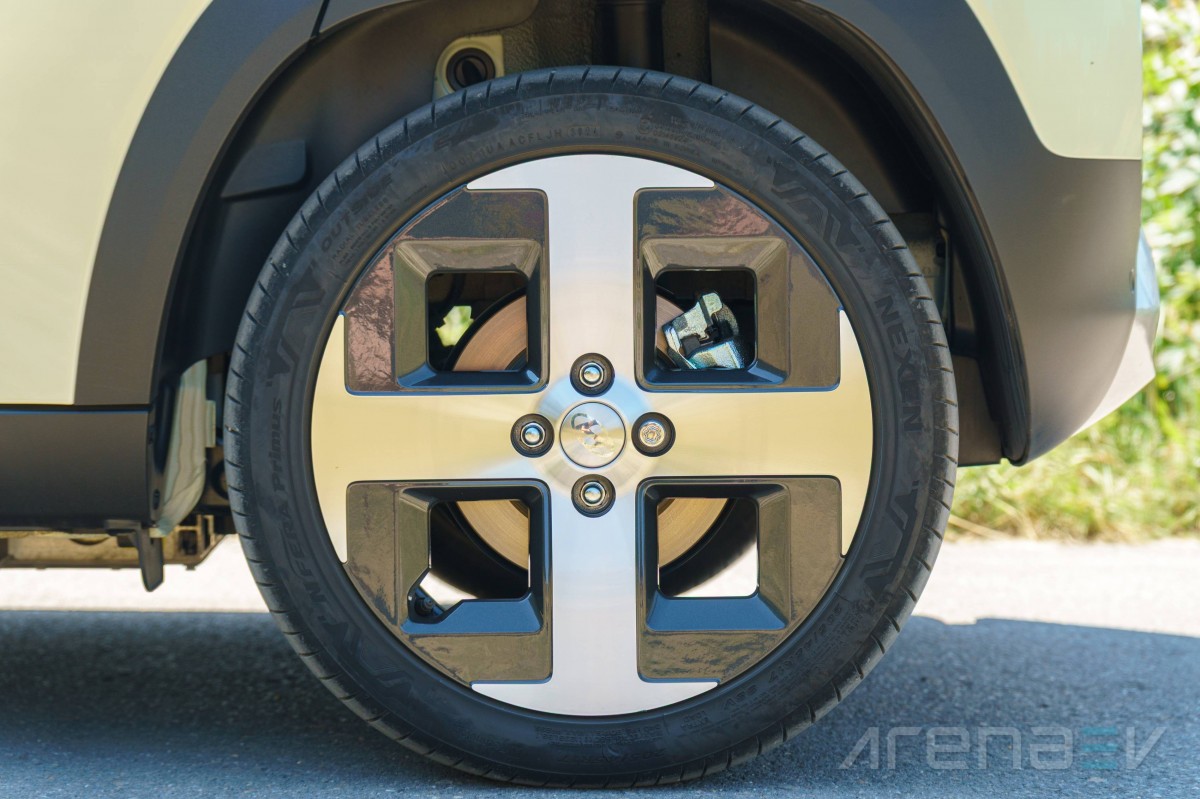
The rear end keeps the blushy face aesthetics, yet the roles are switched. The big rounded elements are reflectors, with the hazard and rear driving lights being those very tiny elements inside the circle. The big LED squares are the taillights and when you press on the brake pedal, they become substantially brighter.
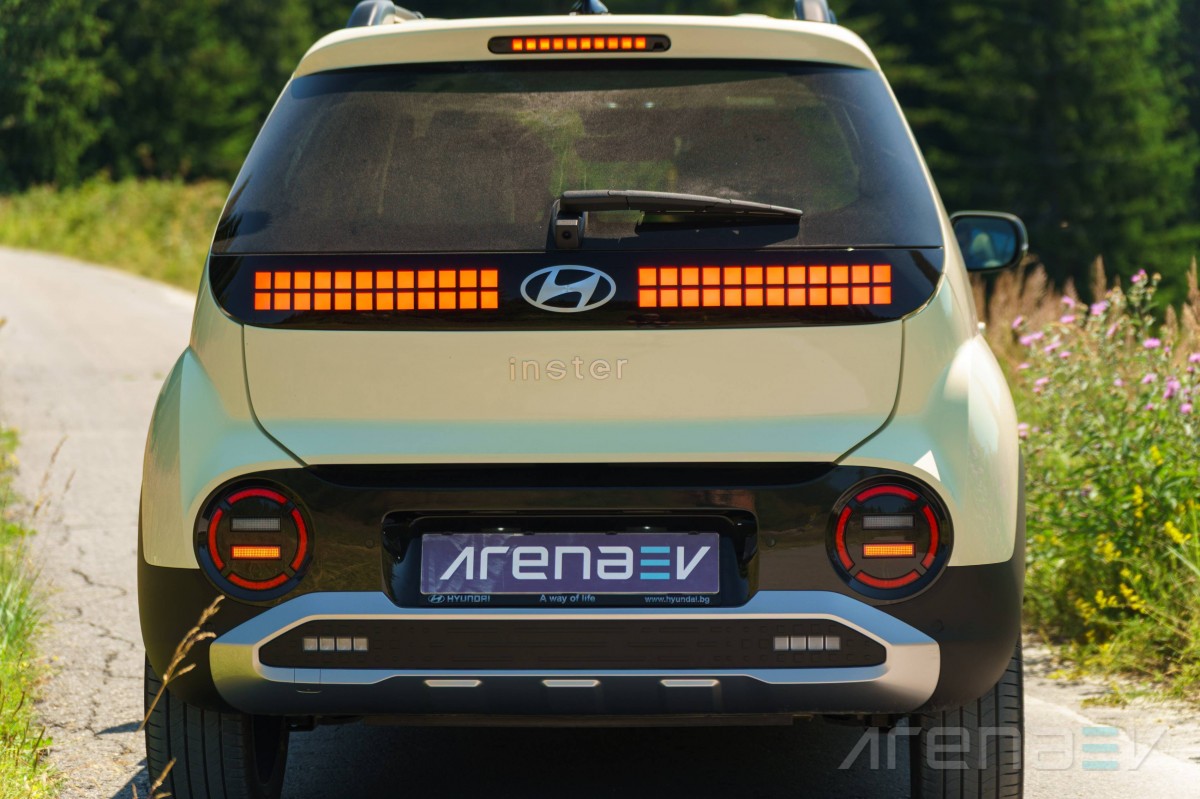
The giant Hyundai logo and Inster readout beneath it make sure everybody knows what you're driving in and finish off the rear-end design quite nicely. It is a lovely vehicle with slightly goofy proportions but that makes it charming and distinct.
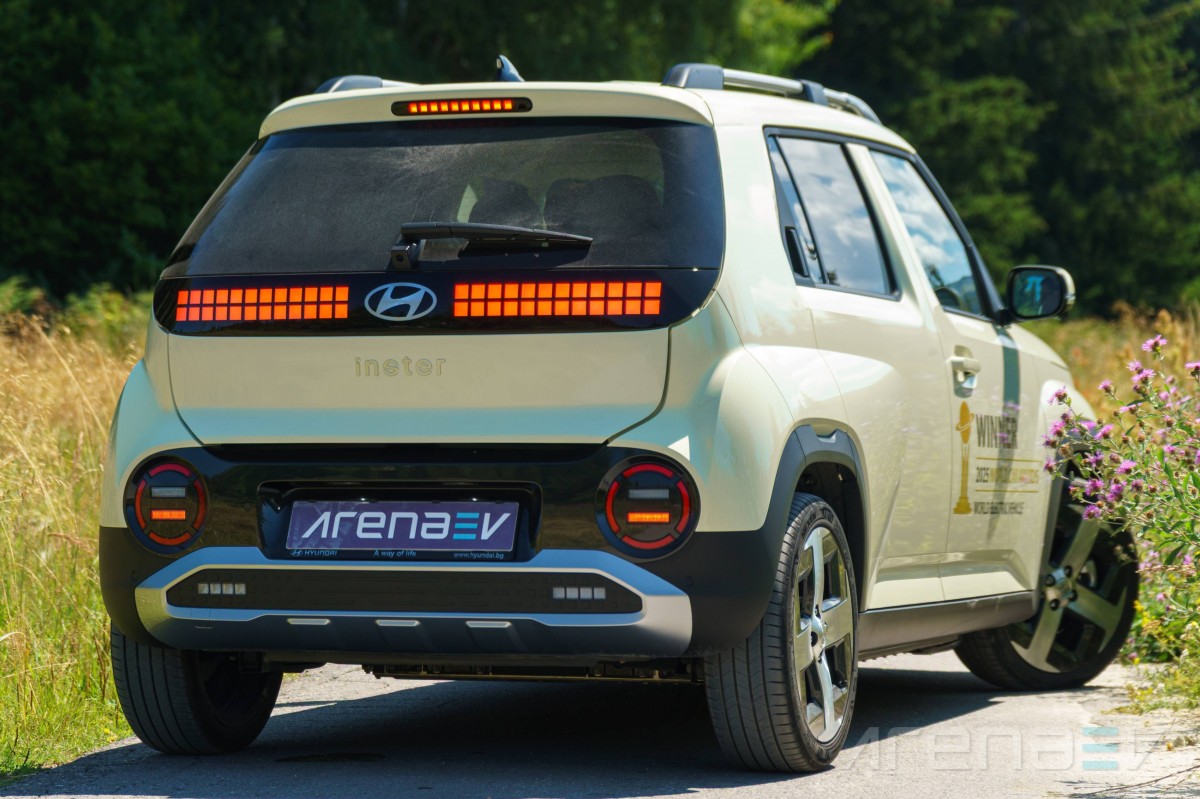
Interior
Hyundai has designed the Inster with ergonomics as top priority and this shows in every detail. The materials are great for the segment and the build quality is more than solid. There are no rattles and squeaks and most of the materials feel nice to touch. Of course, this is a cheaper vehicle and luxury is limited.
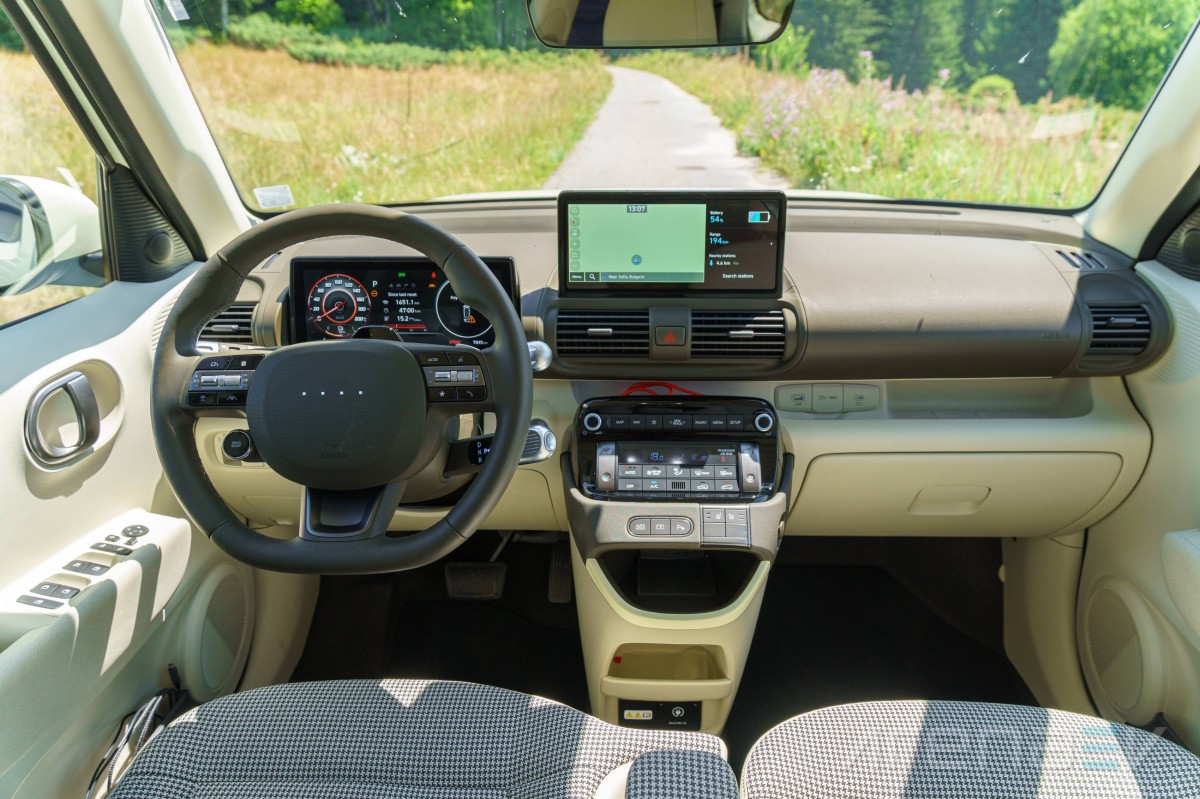
The steering wheel is round and with many buttons to control the stereo and cruise control. On the lower left part of the steering wheel is a dial to control the drive modes. It is a location only high-end sports cars and supercars normally use, yet here it is now in a 115 hp urban hatchback.
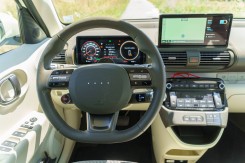
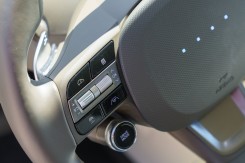

The steering wheel has many buttons.
Interestingly, there is no Hyundai logo on the steering wheel and just four LED dots. This is what Hyundai has been recently doing with no apparent reasoning behind that decision so far. The dots light up and change colors with the drive modes or when charging but that is about where their usefulness ends.
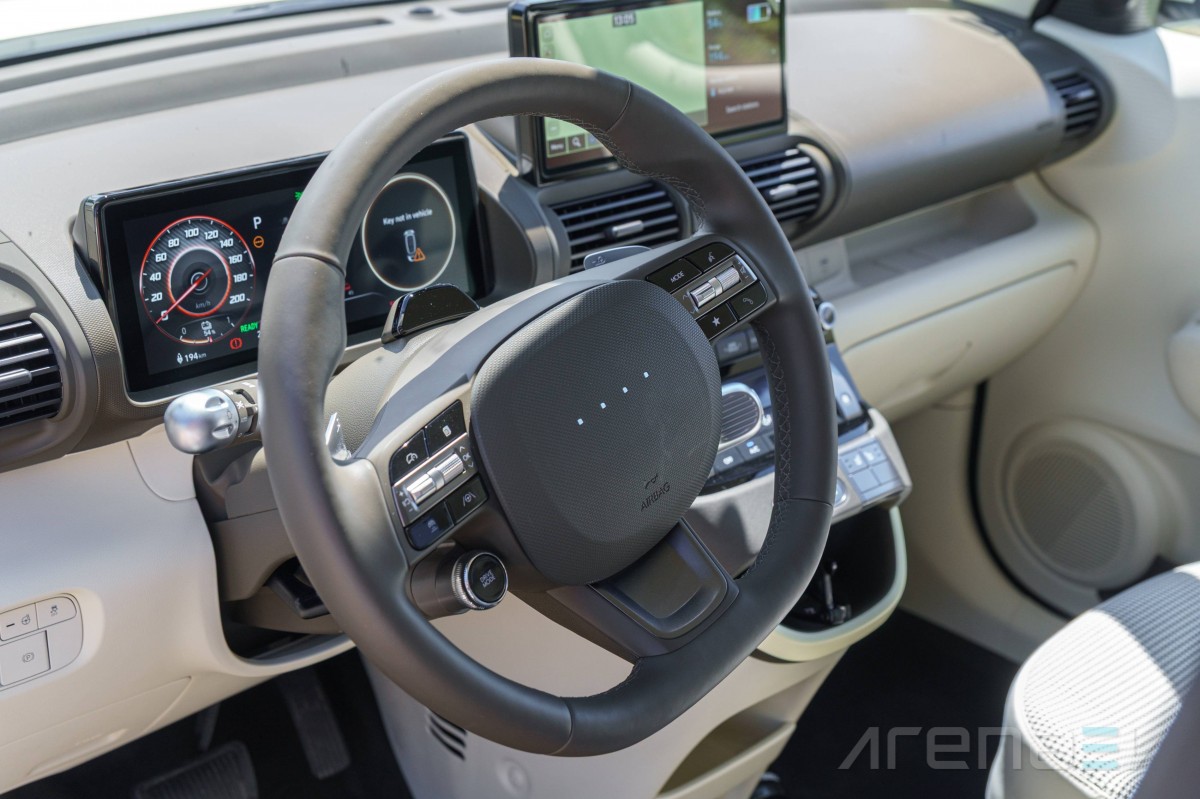
The stalks behind the steering wheel feel amazing to touch, with great heft added to them. It is an element you frequently and we appreciate when manufacturers don’t cheap out on it.
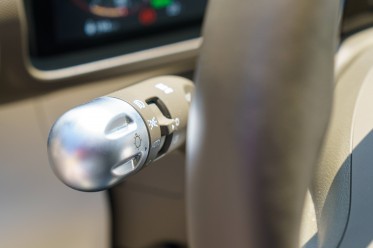
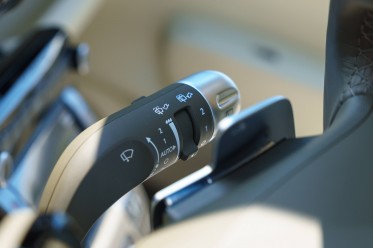
All stalks feel great to touch.
The gauge cluster is a 10.25" display that most current Hyundai models use. It is easy to read, with good graphics and several different layouts. You are not going to need anything more.
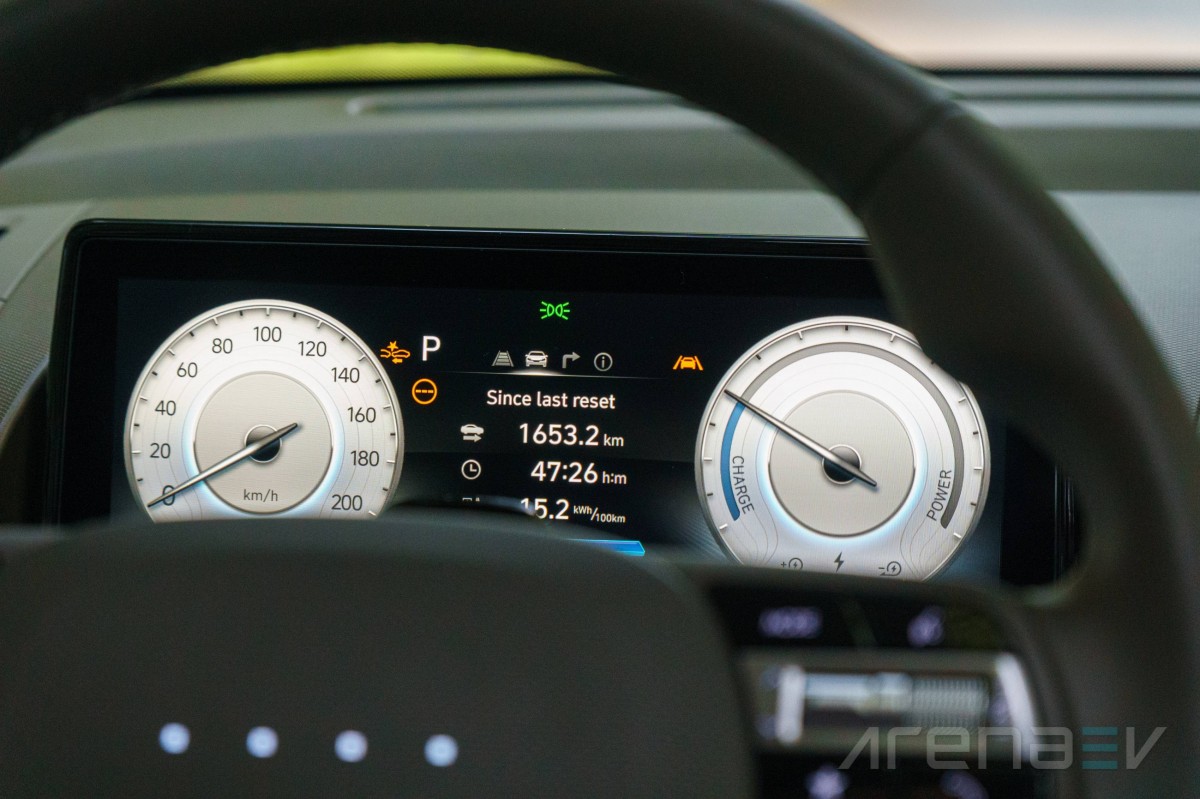
The center display is also 10.25" in size and sticks prominently from the dashboard. It looks like an afterthought with no integration into the design whatsoever. However it works well and offers most of the amenities larger and more expensive Hyundai models do.
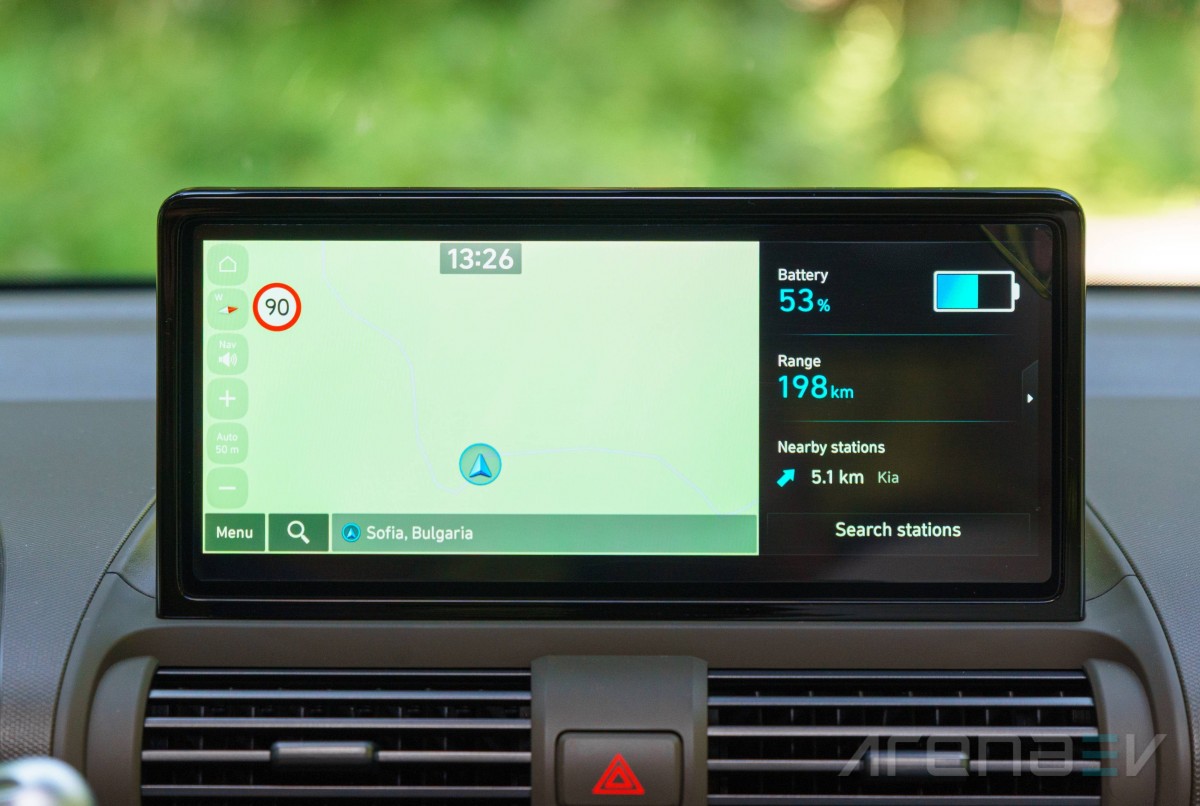
Right underneath the air vents is a shelf for storing smaller items that spans all the way from the steering wheel to the passenger door. It might be practical or some but you have to be careful as there is no cover and things might fly away.
There are three charge ports and you will have to use the USB-A at all times if you want to enjoy Apple CarPlay and Android Auto. This is a rather outdated solution and Hyundai should finally do something to fix it.
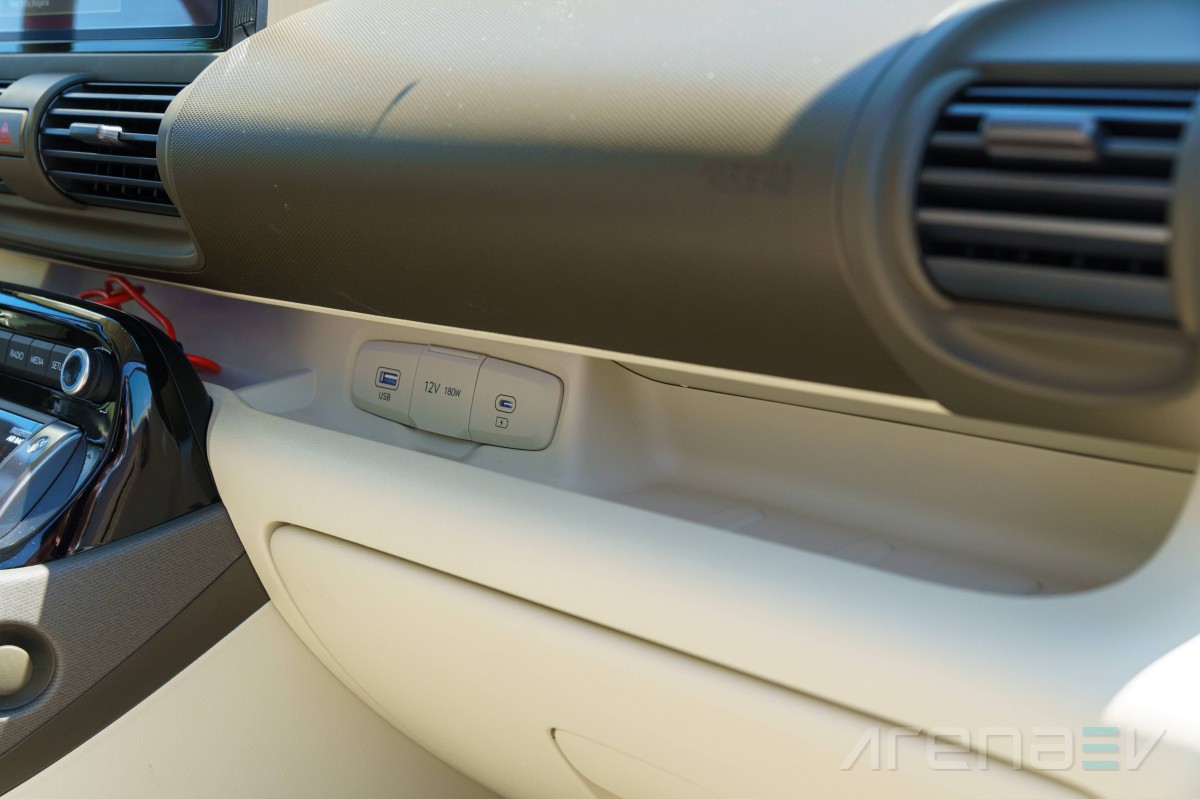
The center console incorporates everything needed. The climate controls are all there, making it easy to adjust at all times. You also get a row of buttons for the most important part of the infotainment system, including a button that you can customize.
If equipped, there are also seat heating buttons, camera and parking sensors activation. Everything is located logically and is very easy to use.
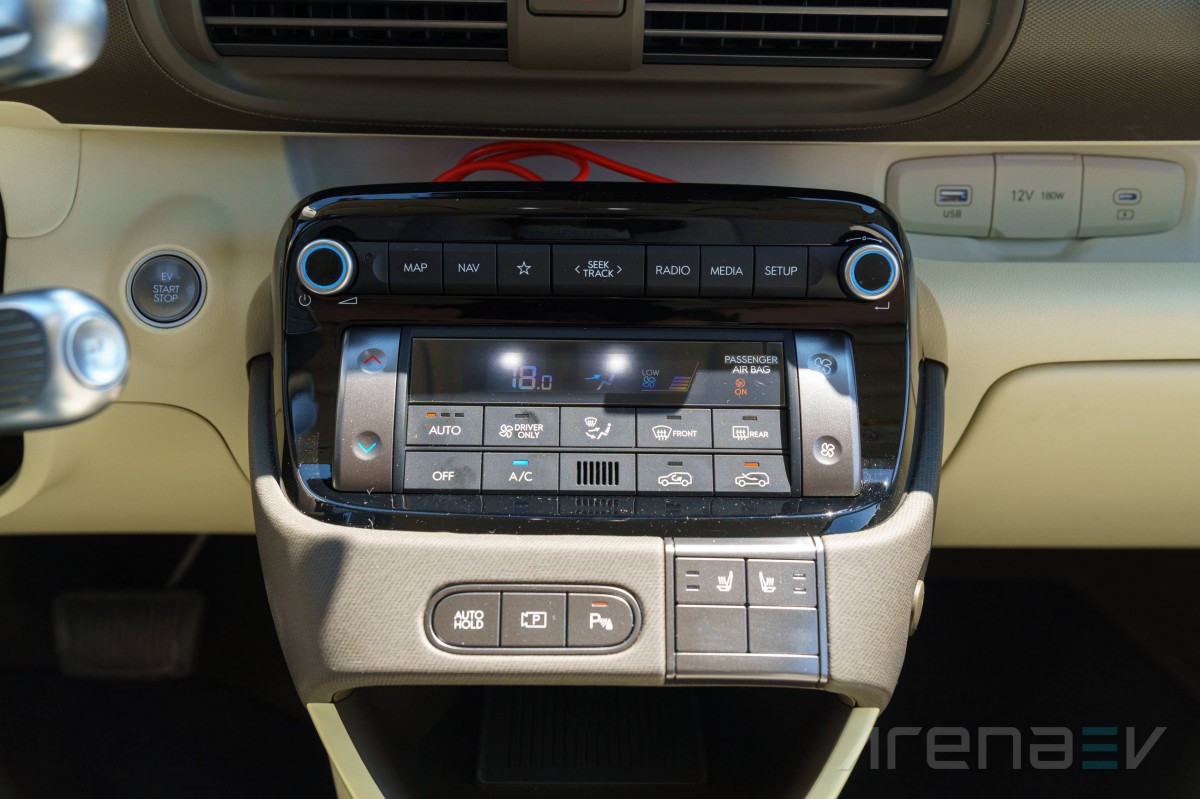
Underneath the console there are two deep storage pockets.

Right above the floor is a household-style outlet to charge bigger devices.

Interestingly enough, there is no console to divide the front two seats, just a little removable armrest. It isn't a full bench seat as it has cupholders instead, yet you can easily lie there to rest or cuddle with your significant other.
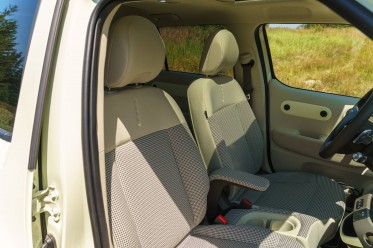
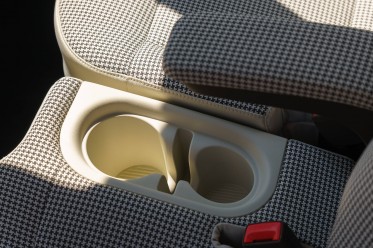
There is no real center console up front.
The seats themselves are comfortable and cushy. They lack side support and heavy bolstering, but that is completely normal for the segment and actually they provide excellent comfort on longer journeys.

On the door sills you can see some of the largest Philips-head screws in the automotive industry. They look tacky and goofy but their purpose is to attach aftermarket elements Hyundai will sell in the future to enhance practicality. However, if you want to store things in the doors without attachments, you're limited to very little pockets.
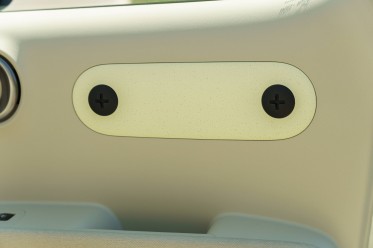
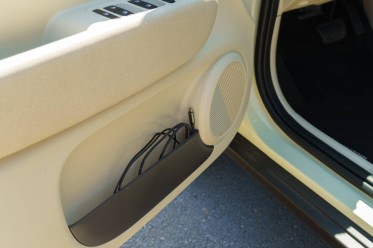
The door sills have limited storage space
A cool optional feature of the Inster is the sunroof that few of its rivals offer. It makes the cabin experience that much more pleasurable and we enjoy it when present.
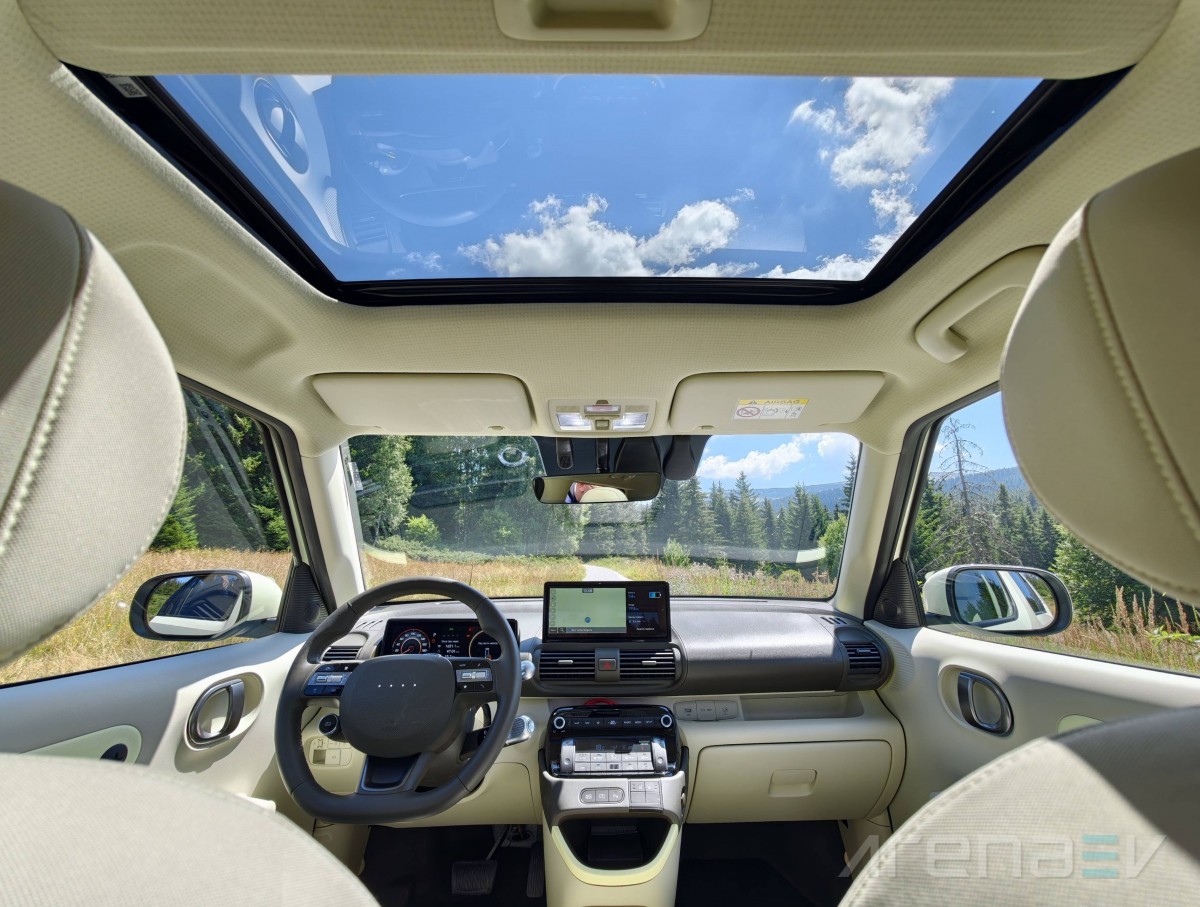
The rear of a small vehicle is usually a cramped space where two or three people can fit with limited comfort. That is absolutely not the case on the Hyundai Inster, where the rear seats are an absolute highlight. The seats move both from the bottom and the backs, resulting in significant space changes. This is done to both allow greater comfort of the passengers and also adjust the available luggage space on a whim.
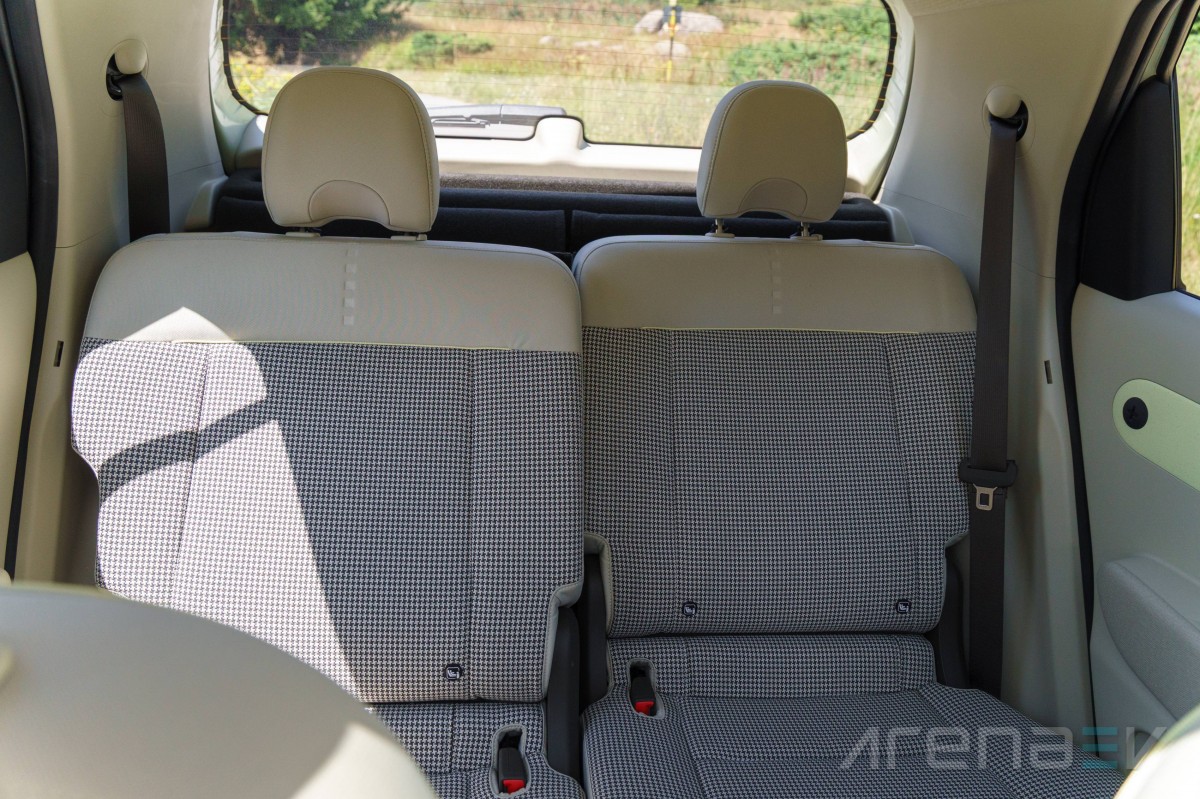
With the seats pushed to the most forward possible position, it is highly challenging to sit inside, yet not impossible. Our 1.95 m (6'4") tall reviewer almost fits behind the driver’s seat, when that one is adjusted for his liking. In less extreme cases with shorter passengers it will be more pleasant to fit even in that position.
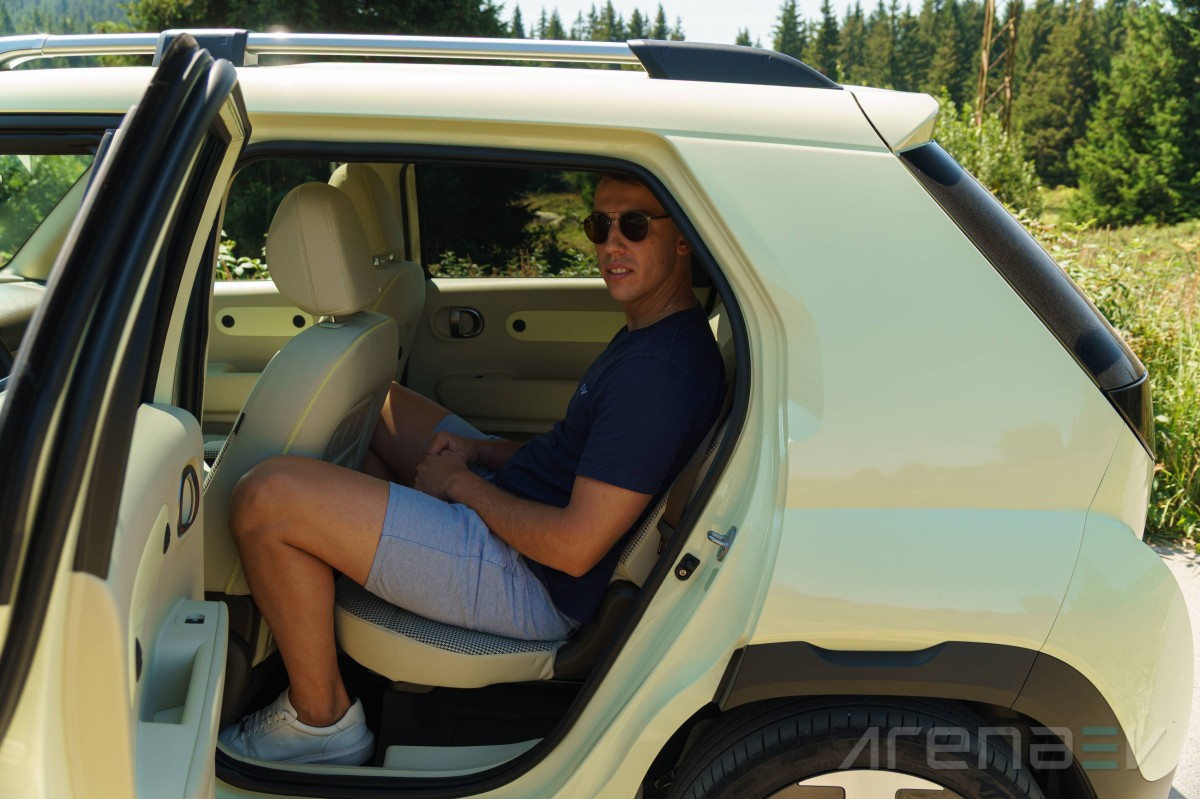
With the seats pushed all the way back, space in the rear becomes plentiful and you feel like you’re being chauffeured around in a luxury limousine. Of course, this will also be beneficial for parents for fitting child seats and utilizing the space.
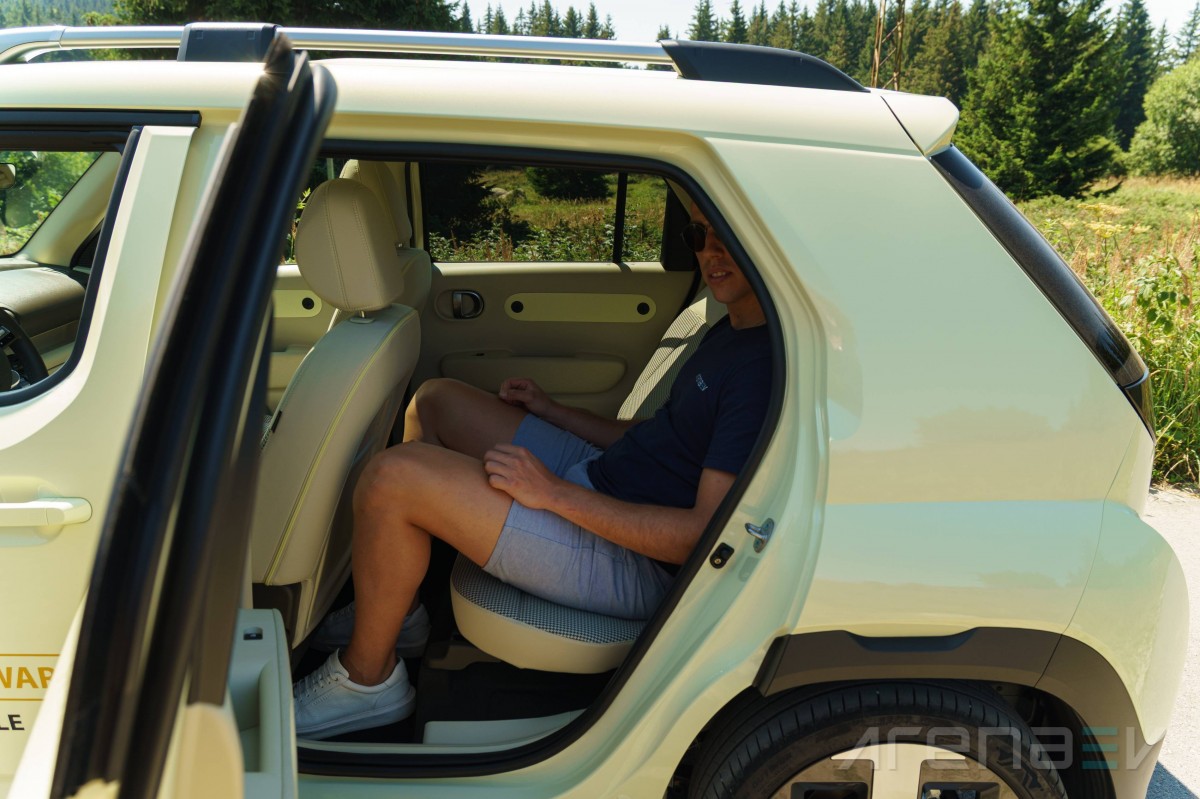
This is a brilliant solution and we cannot believe nobody else is doing sliding rear seats in compact vehicle before. Kei cars used to be the kings of practicality in a small package, but it looks like Hyundai takes things up a level with the Inster. It gives you the option to get excellent passenger comfort, ample storage space or something in the middle, while keeping the overall vehicle size very compact.
The backs of the front seats don’t have the usual nets for storage. The thinking here is that there will be additional accessories Hyundai sells separately to place there as you see fit. We think it's just a fancier way of cutting production costs but at least they have an explanation.
Storage & practicalities
With the seats pushed all the way to the back, storage space is minimal at just 8.4 ft³ in the Inster. This is further diminished by the fact the seats back sit at an angle, not allowing you to utilize the whole space efficiently. There is a rather big storage space underneath the main floor to somewhat compensate for this downside.
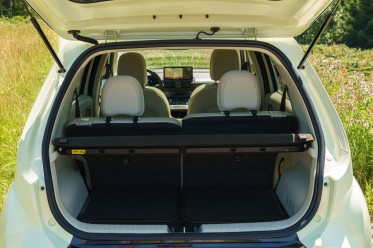
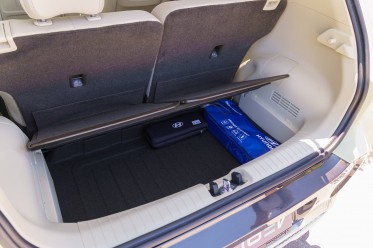
Storage with the rear seats pushed all the way back.
However, as you move them further up front, the volume with the seats still up increases to 12.4 ft³, which is very good for the segment and more than what most rivals have to offer. Also, it becomes much easier to use up the space.
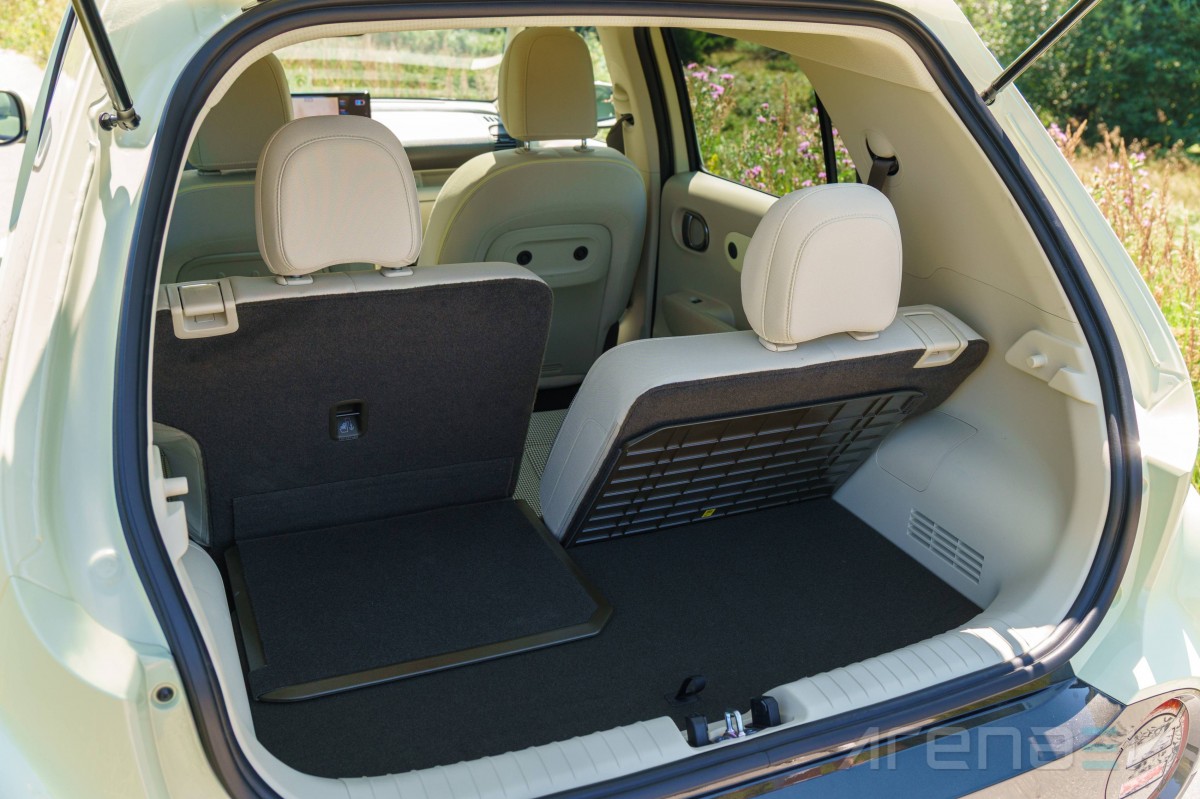
With the rear seats folded the Inster truly stands above rivals. Its seats fold flat with the trunk floor, allowing you to efficiently load longer objects and the cargo space jumps up to 37.4 ft³, which is bordering on midsize SUV territory. The Inster is a packaging masterclass and should be celebrated for it.
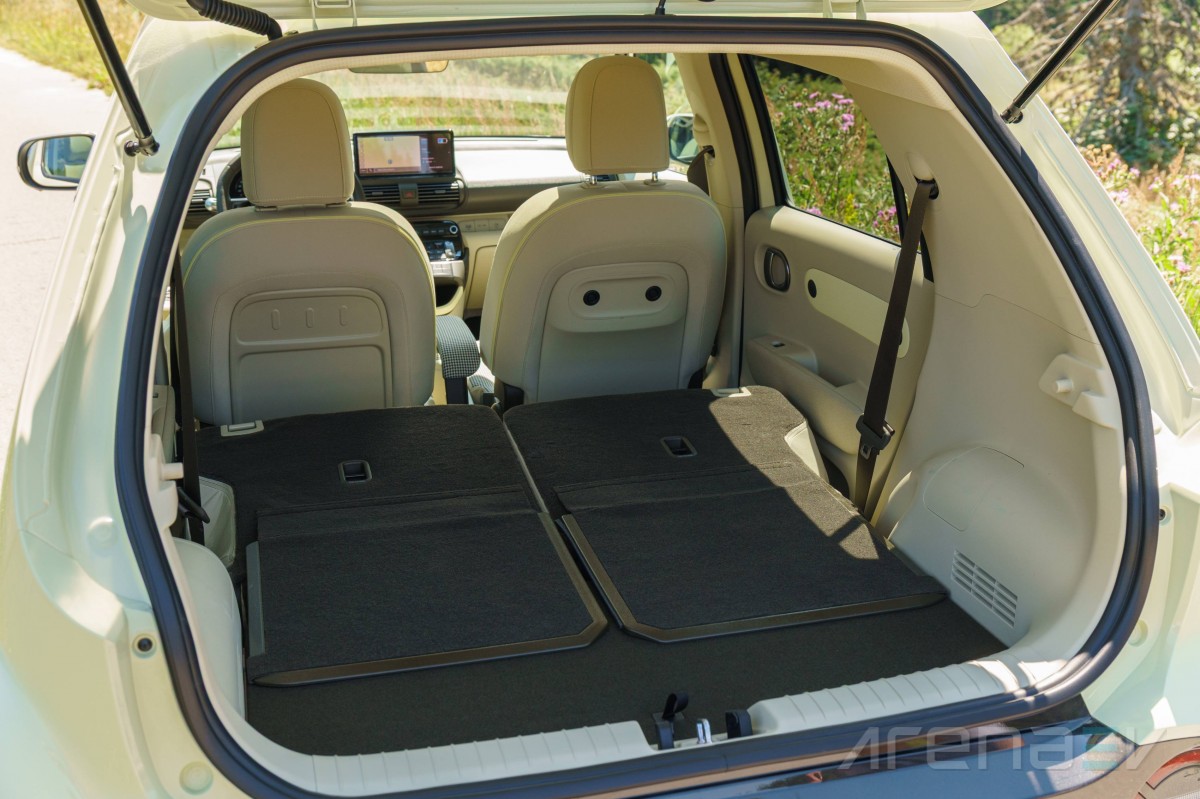
You can also fold the front seats flat to either increase storage even more, or what Hyundai accentuates as a possibility - use the Inster as a bed. Of course, there are holes and you need to insert a mattress to make it comfortable but with about 10 ft of space you get more legroom than any bed. Even if you never use it this way, it is great to know your vehicle is capable of doing such a trick or simply use it to carry long objects.
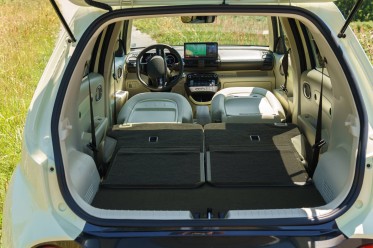

With all the seats folded, there are endless possibilities.
Sadly, there is no frunk (front trunk) in the Inster, which comes as a slight disappointment given how much thought was put on convenience and practicality.
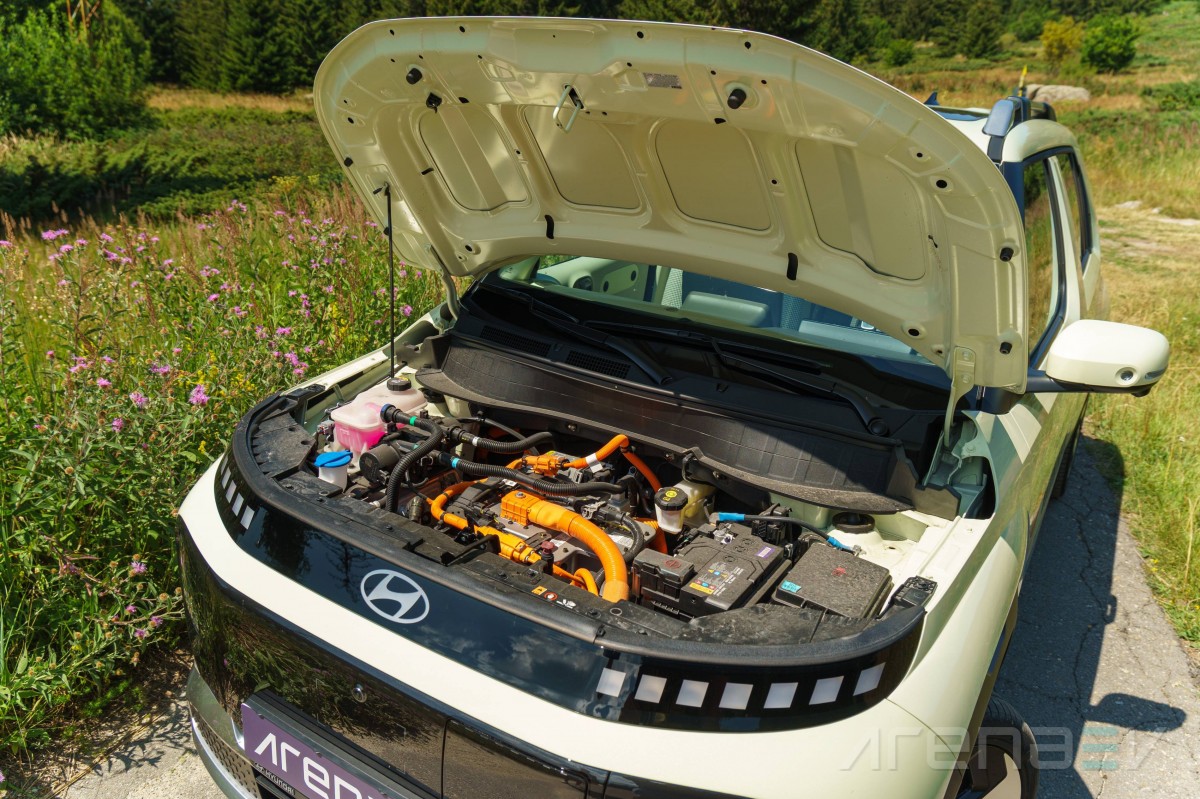
Driving experience
Hyundai didn't really aim to make the Inster handle like a hot-hatch, but instead it wanted to make it feel safe and easy to operate.

You just get inside and drive, the car will handle the rest. Everything is simple and intuitive, if hardly exciting.
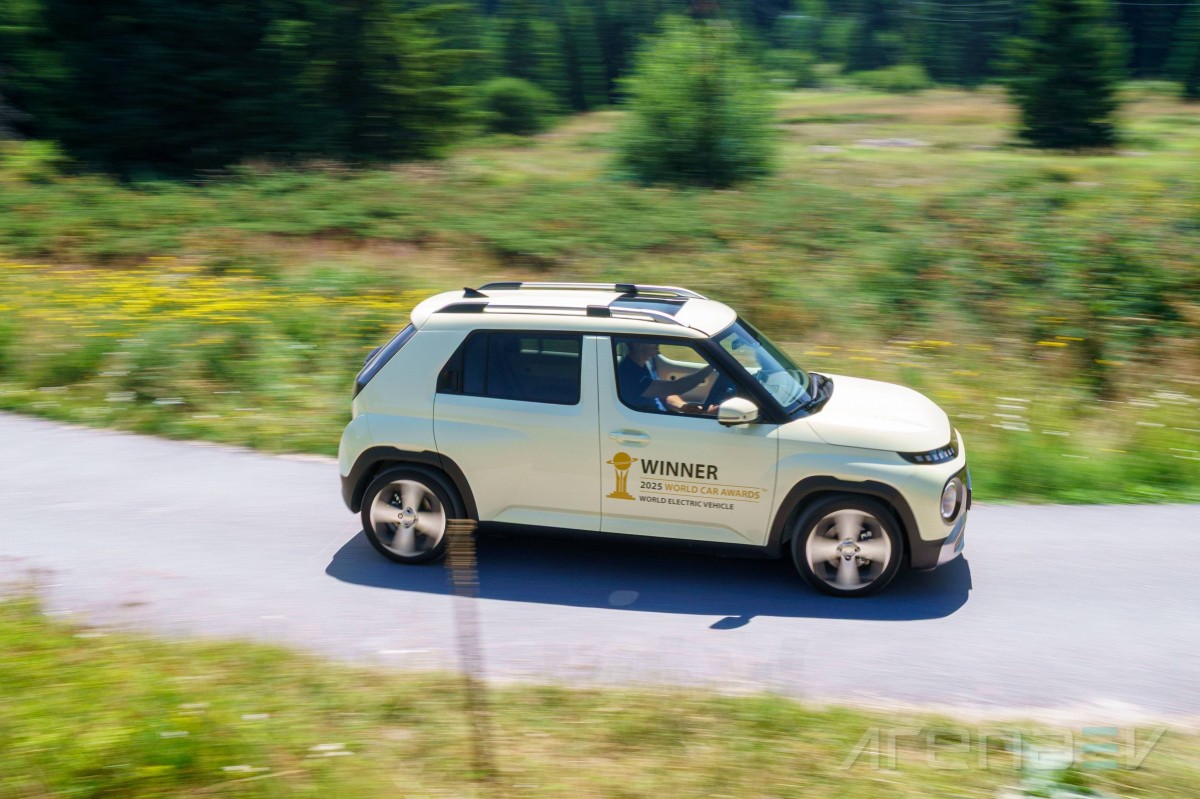
The steering feedback is almost non-existent, but the wheel requires almost no effort to turn. You can even see the steering column from the inside, signaling how basic everything actually is. There is no feedback tightening or stiffening, just powerful servo that makes driving (calmly) a breeze.
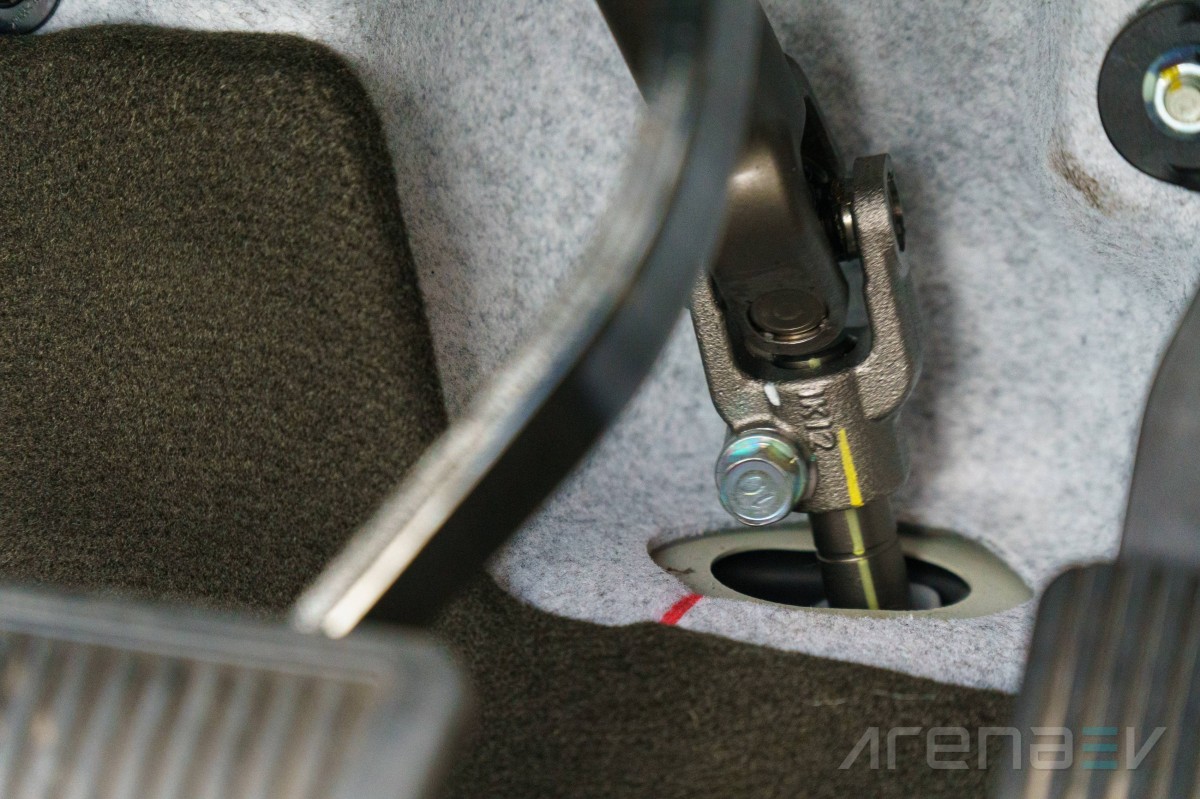
The car handles alright in corners thanks to the short wheelbase, low battery placement, and low weight. The limit is hard to feel as the tires are the first thing to break loose under the pressure of a corner. Still, the Nexen N Fera Primus tires have good grip, and for a cheap low-tier brand handle surprisingly well.
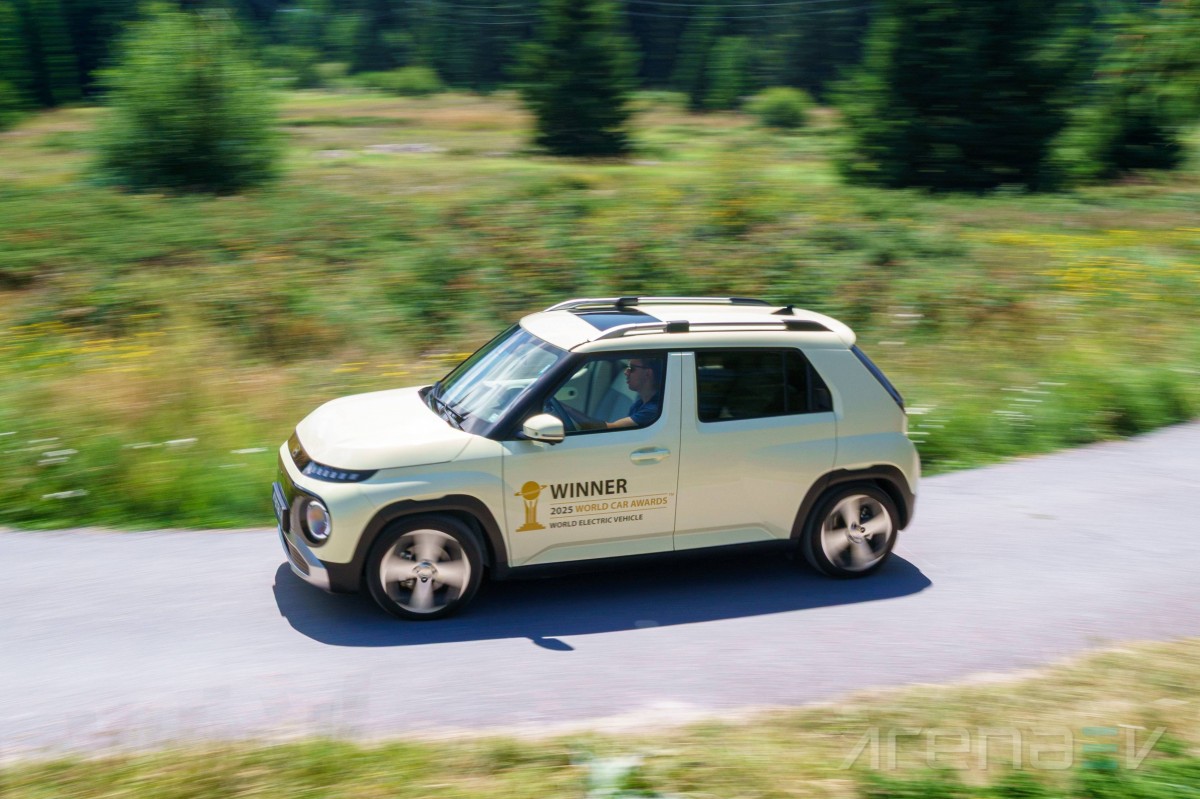
However, you don’t really want to go to those extremes as the suspension dives you right into the corner, making aggressive cornering an unpleasant experience. You get tons of body roll that come with the softer suspension. Combined with the loose steering feedback, you really don't want to push the Inster to its the limits, even though it's no slouch.
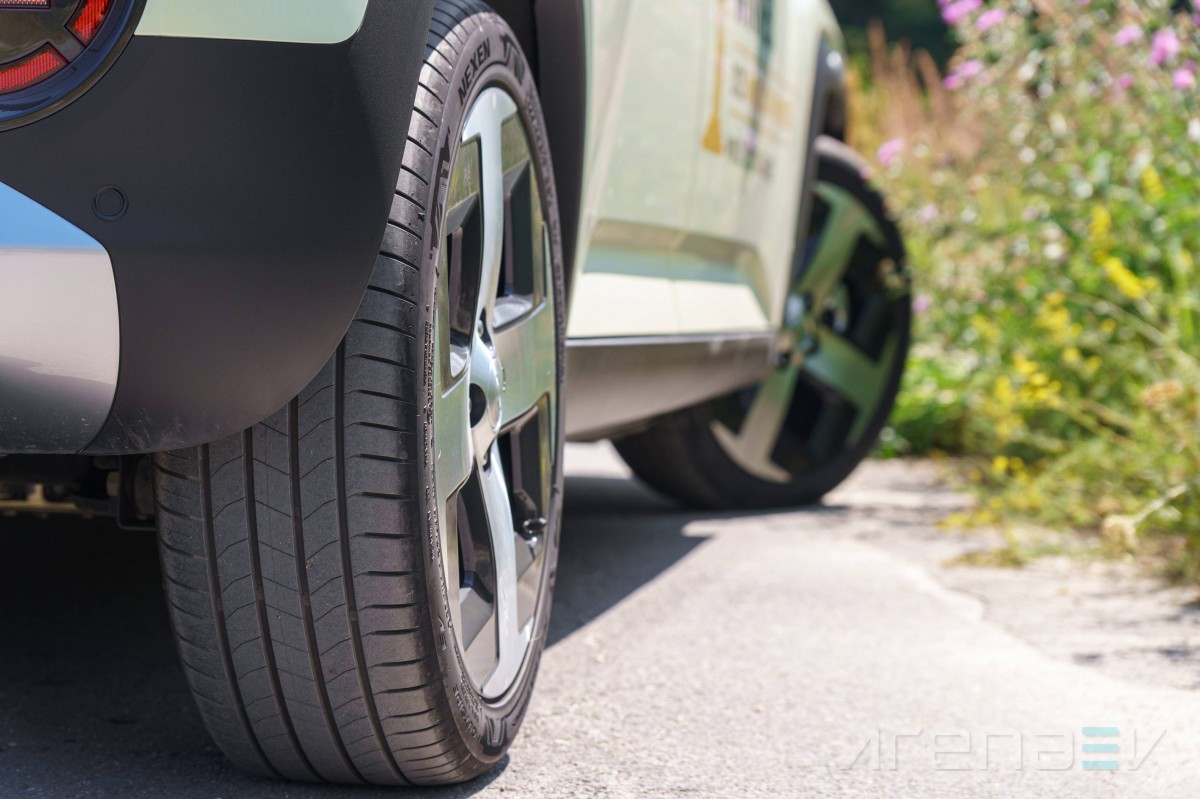
An urban vehicle must fit in tight spaces and get out of them quickly, which is why the tight turning radius of just 34.8 ft is a massive benefit. This, combined with the small size makes the Inster a breeze to park anywhere.
It gets even better when you opt for the 360° camera. It has fabulous image quality that will make some cars with twice its price jealous.

When it comes to assistants, Hyundai is one of the worst offenders in the auto industry right now due to its insufferable dings for all the driver aids. Not only are they annoying, but they also require multiple touches of the center display to be turned off every time you start the vehicle. The only one you can easily turn off is the traction control, which is bizarre, to say the least.
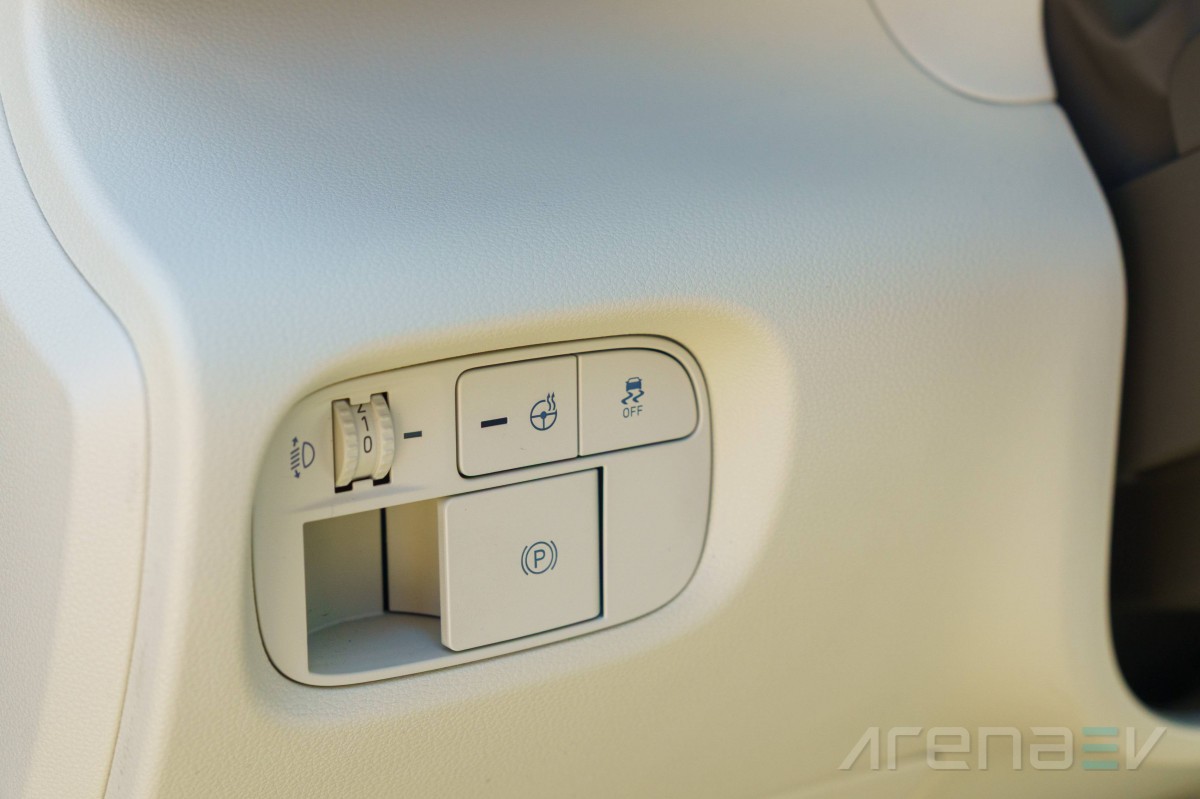
If you want to get rid of the attention assist that doesn’t recognize you most of the time and just beeps, the speed assist that randomly picks up numbers from nonexistent signs or the lane-keeping assist that suddenly wants to put you in the ditch it is a hard procedure you must follow every time you start the car. The easiest way is to set one of the custom buttons to send you to the assistants menu so you don't need to navigate there all the time.
One good assistant feature Hyundai and Kia have been doing for years now is the blind spot monitoring when you press the turn signal. This essentially eliminates all possibilities for a vehicle in your blind spots and makes driving safer, without interfering with your driving in any way.
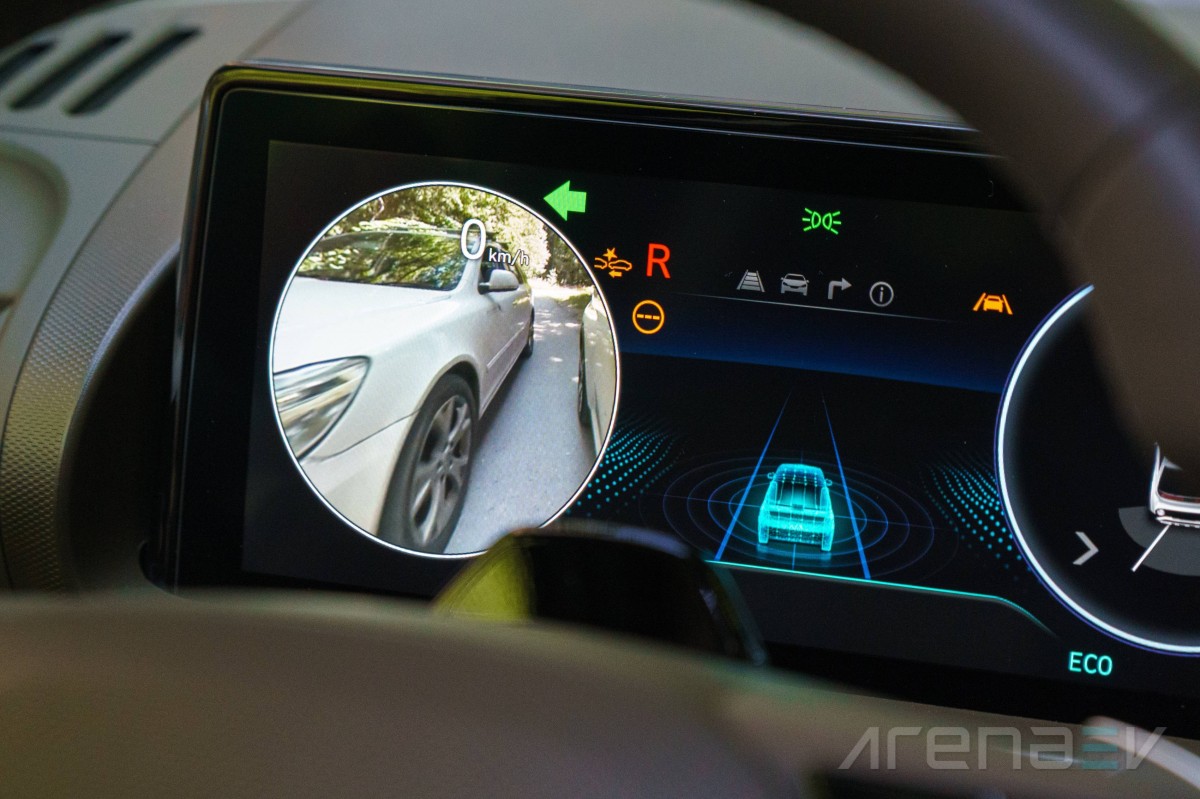
Ride comfort
The ride in the Inster is comfortable - it absorbs potholes and bumps with ease. The lifted suspension makes for longer travel and eliminates the crashy sensation at bumps with lower speeds. High speeds make for a rougher ride due to the short wheelbase, but the low weight makes the vehicle calm down quickly. The ride is certainly balanced for comfort rather than driving experience.
Tech features
Hyundai has blessed the Inster with its latest infotainment we had previously covered in our reviews of the Ioniq lineup. The system is simple and easy to operate with great button visibility and no input lag. It doesn't bring any world's firsts, yet it perfectly covers all the basics.

You get a main screen with plenty of information, which you can also personalize. It can either look subdued with minimal readout or bombard you with vehicle parameters based on your preferences.


The main menu can look as you wish.
The navigation works well and calculates your journey, including potential stops for charging. It also gives you live information about traffic jams or construction work, which can be highly useful to avoid traffic.
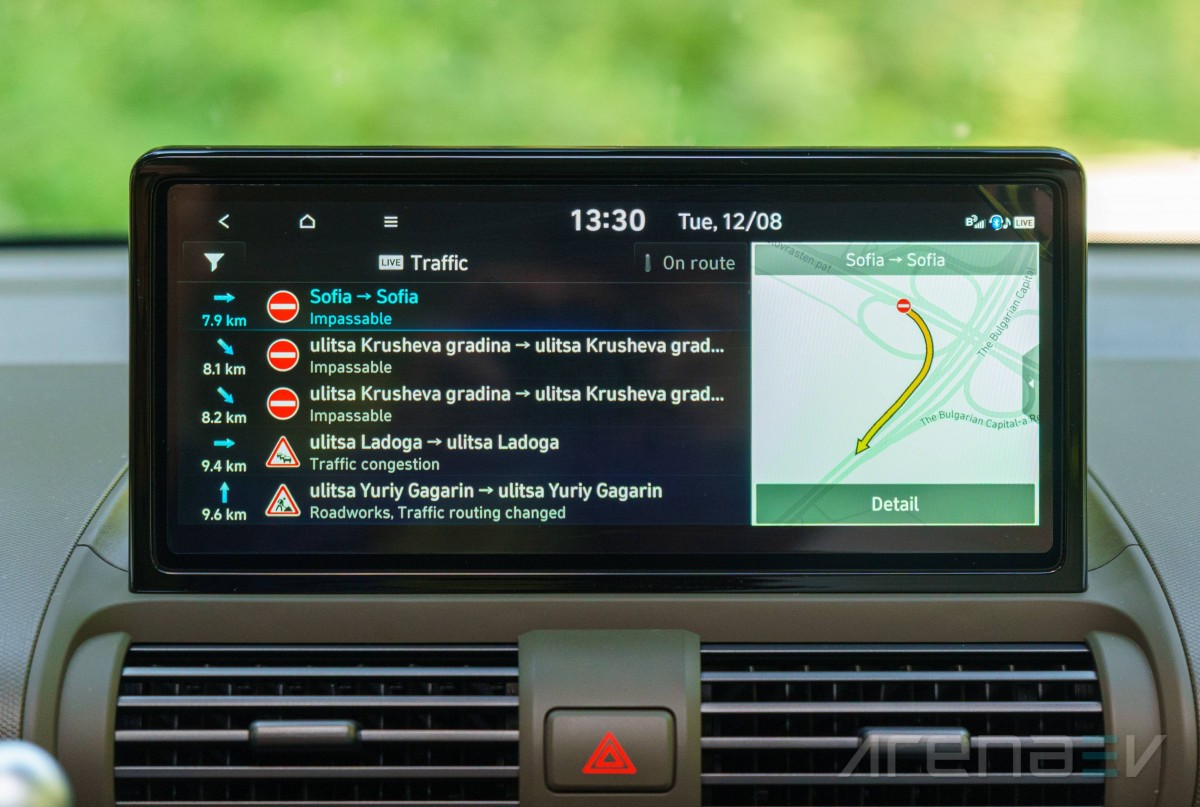
You wouldn't need to use the built-in navigation if you rely on Apple CarPlay or Android Auto, as the navigation can be done through Google Maps or Waze. However, CarPlay and Android Auto can only be activated through a wired connection. This isn’t optimal for modern standards, let alone the fact it has to be done through a USB-A, which is becoming obsolete as we speak.
You get real-time updates through Hyundai’s Bluelink connected services. The system provides you with important local events, checks your schedule in the calendar and can even inform you about the results of your favorite sports teams. The system can also do vehicle diagnostics and suggest actions if needed.
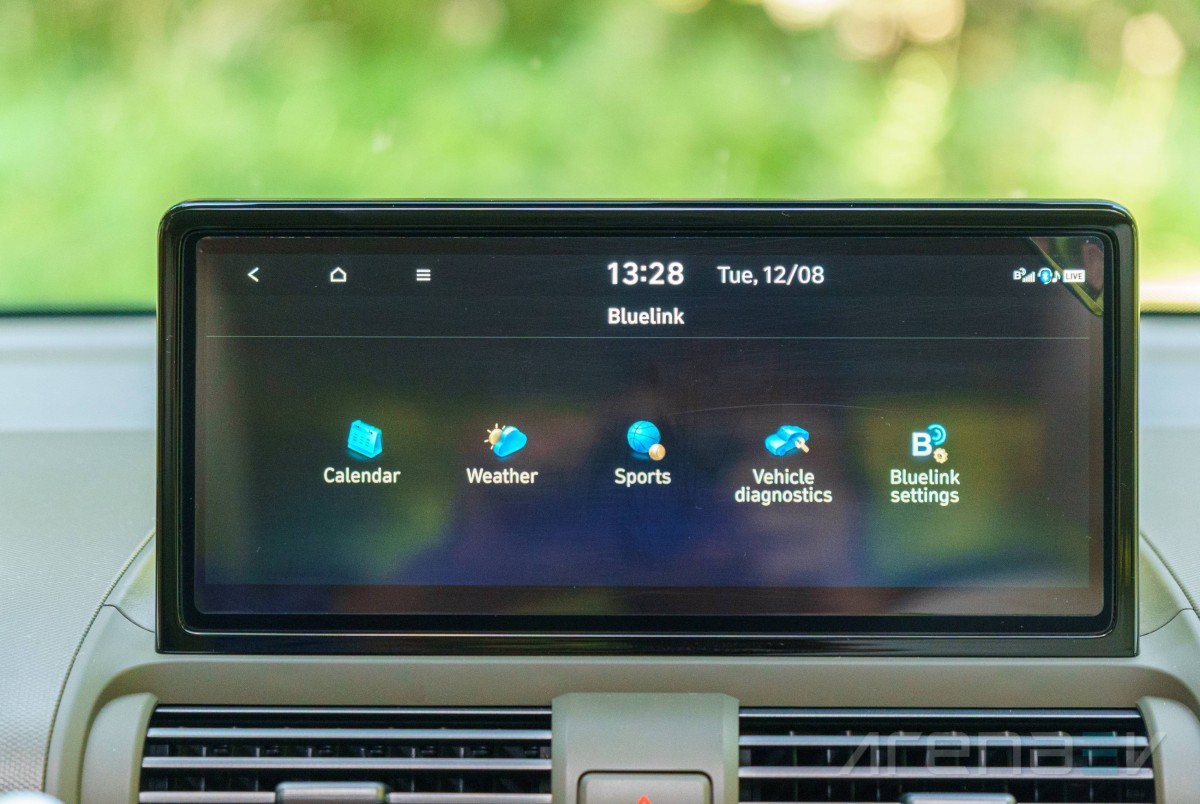
Quiet mode is a neat feature the Inster offers, allowing you to play music quietly only through the front speakers. This is quite useful if you have kids sleeping in the back and you want to listen to some music without disturbing them.
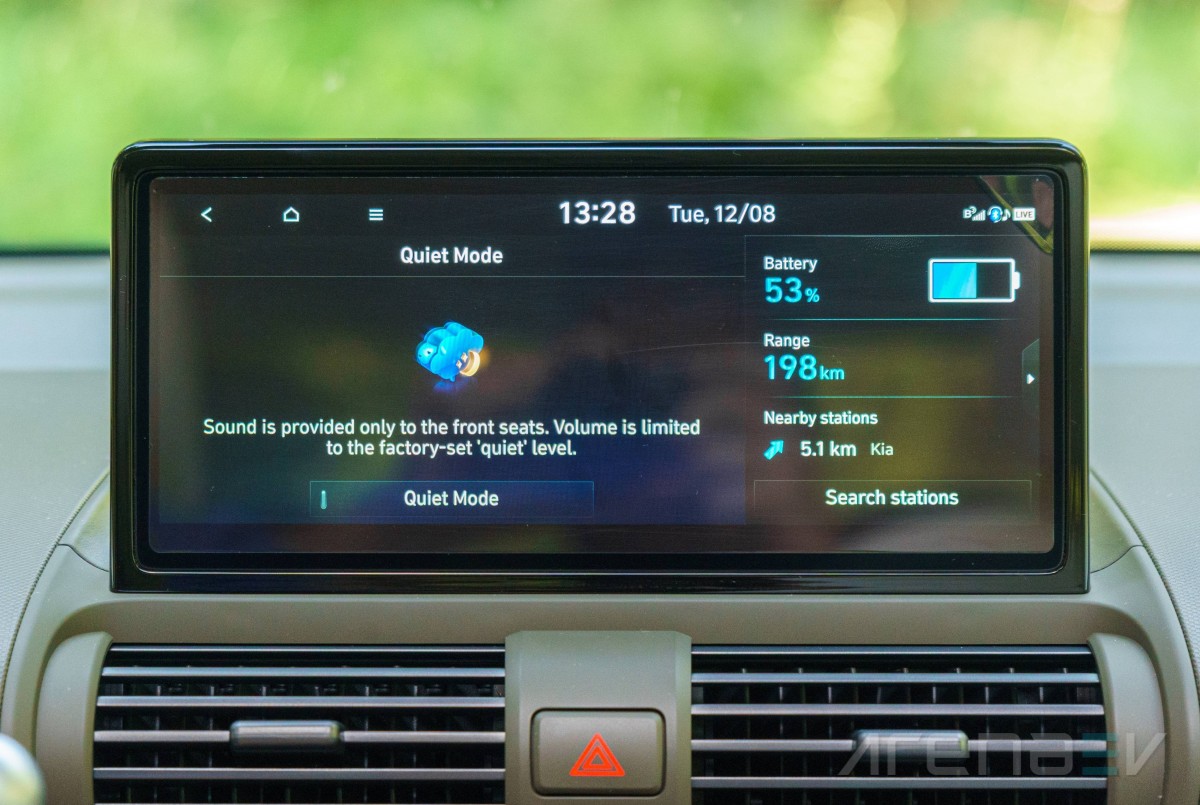
If you want to use the central display instead of the climate control buttons, Hyundai allows you to do so. We see no benefit of that integration, but it doesn't hurt being there, as well.
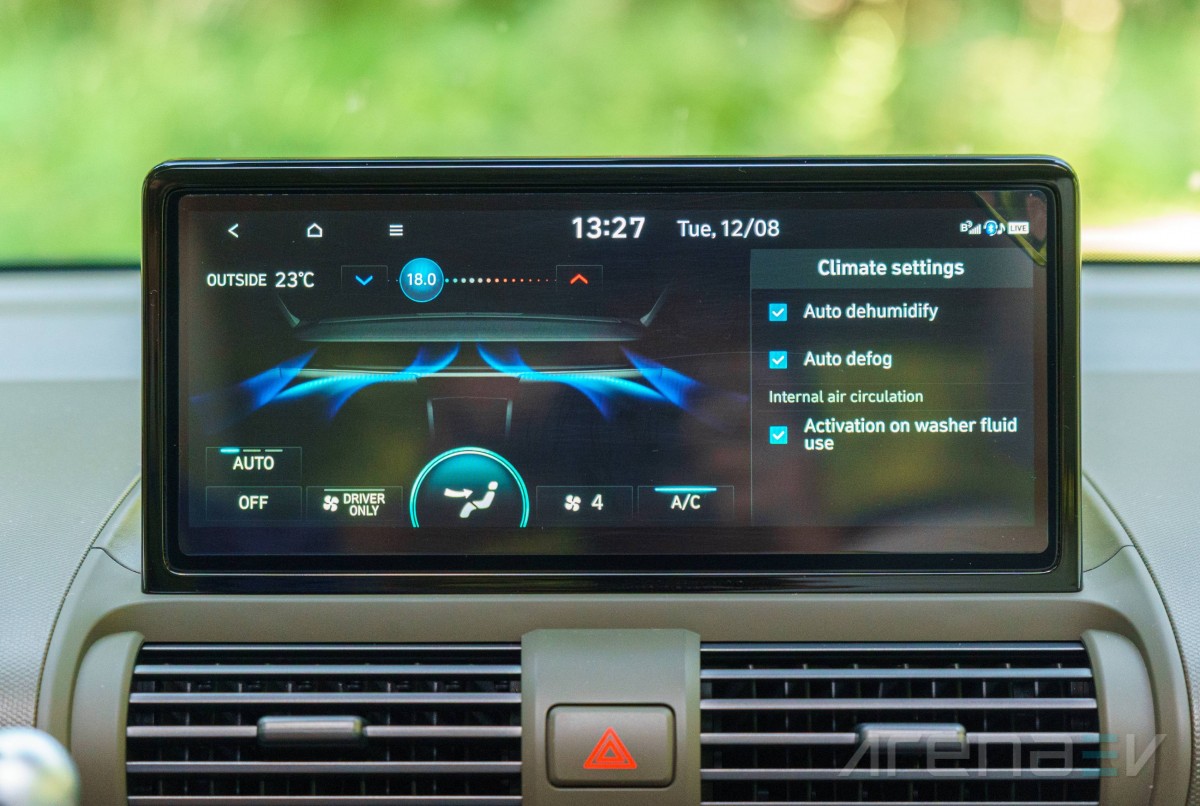
Ambient lighting used to be an expensive option only luxury vehicles got. Now, with the increased use of LED lights and their cheap price, even vehicles like the Inster get cool interior ambient light to create a more comfortable setting while travelling, especially at night.
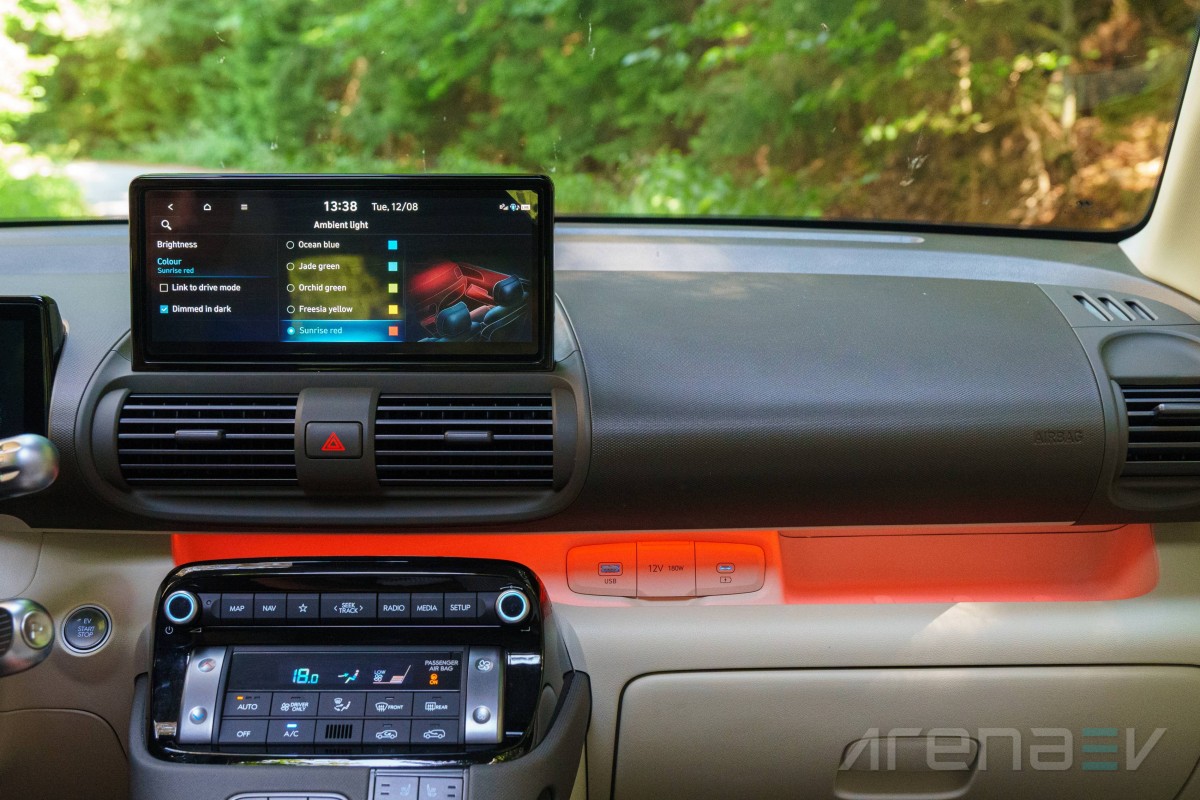
The gauge cluster display is great as it's being shared with more premium models. It is thus one of the most capable in the segment.
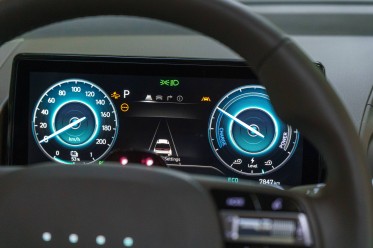
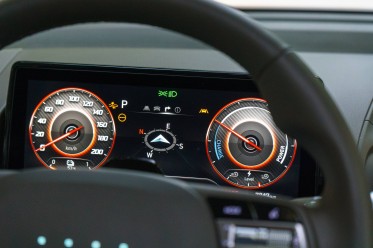
The gauge cluster has many different layouts
There are several different layouts, which look vastly different from each other. The sport display is a bit out of place, but everything else looks classy and displays everything you need. You can also select what information is presented to you in the middle and personalise the outlook as much as you want.
Cabin noise
The Hyundai Inster is about average for its segments when it comes to cabin noise and that holds true at all speeds. As the speed increases you get more and more wheel and wind noises, especially from the rear.
Sound level tests are carried out with a specialized sound level meter placed in the car's cupholders. The test is conducted with air conditioning and radio off and while maintaining a steady speed.
Acceleration and braking
With only 115 hp the Inster is no drag demon. However, it accelerated nicely from 0 to 62 mph in 10.15 seconds, which is half a second quicker than the manufacturer claims. The initial acceleration to about 25 mph feels great and is enough to propel in city conditions and even zip through traffic thanks to the small size. The claimed top speed of 93 mph can actually be exceeded as we got to 99 mph, although the Inster takes a long time to get there.
Braking performance is okay, the Inster needing 37 m (121'5") to go from 62 mph to a halt. This means it's not unsafe, but it's also not the greatest when compared to rivals. As we repeated the test the breaking slightly deteriorated, which clearly shows the system leaves some room for improvement.
Acceleration and deceleration are measured with a RaceBox device inside the car. Testing is done with a single person inside the car, with air conditioning and traction control off.
Consumption
Hyundai has made the Inster very efficient. For its intended urban usage the consumption is minimal. If you go on the highway you’ll have to stop frequently to charge. For our detailed opinion on the consumption of the Hyundai Inster check out our dedicated range test article.
We measure consumption by driving at constant speeds on an identical test route during the day. Testing is conducted with air conditioning, all safety systems and radio on. The data comes from the vehicle's board computer. Specific testing parameters such as ambient temperature are mentioned in the text on a case by case basis.
We now suggest you use the widget below to find out the Hyundai Inster Long Range’s range in every combination of speed and temperature you might need. We've used our real world tests and a complex model to provide an estimate that should be as close to the actual performance as possible.
Charging speed
The Hyundai Inster has a good initial charging speed of 120 kW, so if you’re in a rush you can get some juice quickly to reach your destination. However, once its battery gets over 20%, the speed drops significantly and you need to spend significant time on the charger. For an urban vehicle these numbers are satisfactory, but they also mean longer trips would be a pain.

Competition
The Inster faces stiff competition from an increasing number of models entering the market of compact urban tacklers and everybody has a different approach. Hyundai underlines its great packaging and serious utility as the main benefits, but after doing our review we can easily say those not the only advantages of the Inster.
The Citroen E-C3 is slightly longer and more rugged on the outside. Both vehicles offer roughly the same storage space, yet the Inster allows for great customization. The interiors of both cars are wonderful for the segment with no major complaints. The Citroen is cheaper and arguably better looking, whereas the Inster is the utility king.
Then there's the Fiat Grande Panda, which will coincidentally be the next vehicle we review. The Italian has similar proportions and price, but is less flexible inside. Battery size is also on the side of the Inster, but the distinct styling, heritage name and better interior materials could persuade buyers to choose the Panda.

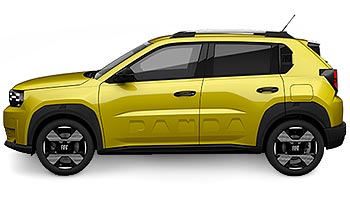
Citroen e-C3 44kWh 2023 - • Fiat Grande Panda 2024 -
Verdict
The Hyundai Inster is a perfect example of what a city car should be. We are usually skeptical of car awards, but it being awarded World Electric Vehicle of 2025 feels deserved. It shines in most categories and none of its shortcoming can be considered a deal-breaker, especially for the segment.
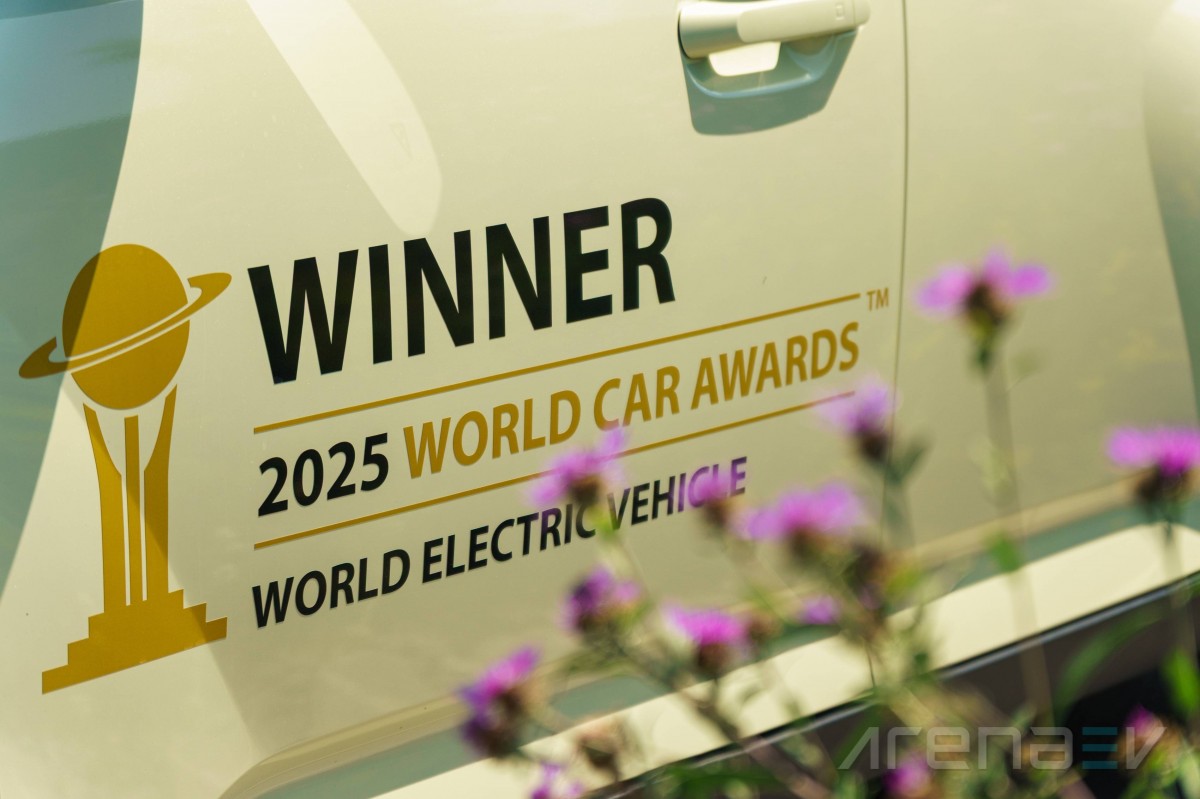
The outside of the Hyundai Inster combines ruggedness with retro-futurism to create an appealing vehicle. The car looks distinct with high ground clearance and usable roof racks.

The inside is tremendously practical and we commend Hyundai’s efforts to make a car the size of a Mini Cooper be as practical as most current SUVs. The material quality and advanced infotainment round up the great overall experience.

Hyundai knows people don't expect such a vehicle to be a cornering king, so it prioritized comfort. The sensation behind the wheel of the Inster is not one keen drivers will appreciate, but it's one people wanting to go from point A to point B in the city will surely love.

Pros
- Unprecedented utility.
- Exceptional 360° camera quality.
- Masterful interior packaging.
- Movable backseats.
- Small turning radius.
- Great efficiency.
- V2L charging.
- Good build quality.
- Affordable pricing.
- Solid stalks behind the steering wheel.
Cons
- Highly intrusive driver aids.
- Hard to disable driver aids.
- Wired Apple CarPlay and Android Auto.
- Insufficient navigation information.
- Notable body roll.
Related
Reader comments
- O
There aren't any out of warranty ...
- 02 Oct 2025
- J9A
- Someone
Insters have a high number of ICCU module faults which would cost 3000eur to get it fixed out of warranty. Too bad for a ingenious little car.
- 26 Sep 2025
- aj%
- Anonymous
To turn off audible warnings for speed limits in your Hyundai Inster, you will likely need to perform a shortcut by long-pressing the mute button on the steering wheel for about 2-3 seconds. This action should transition the system from audible warni...
- 23 Sep 2025
- mX$
